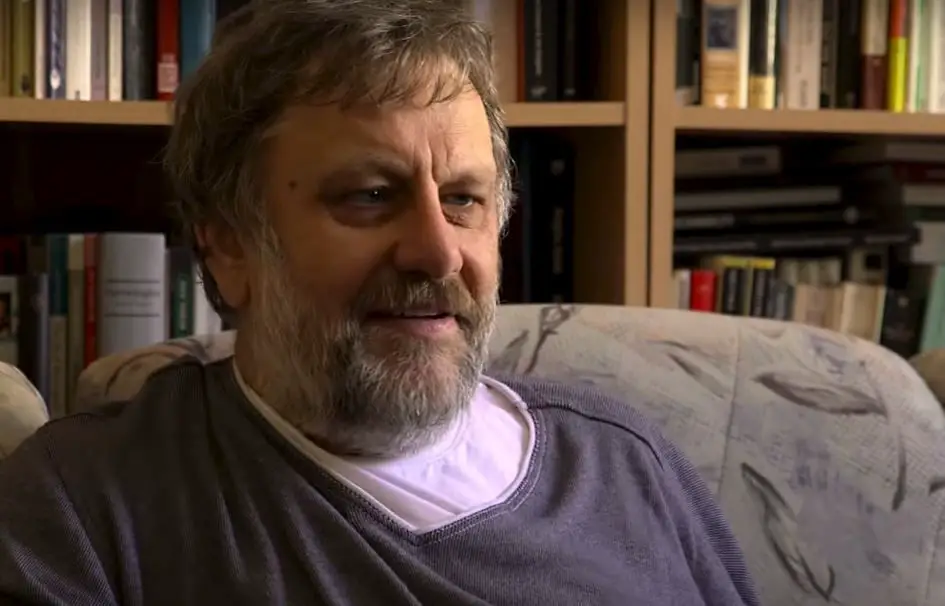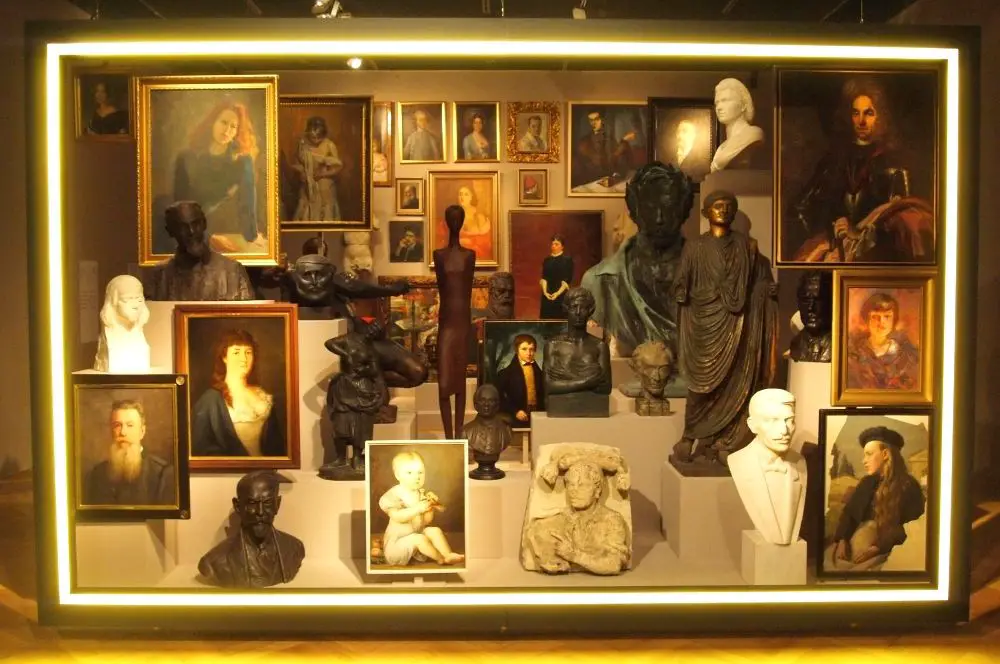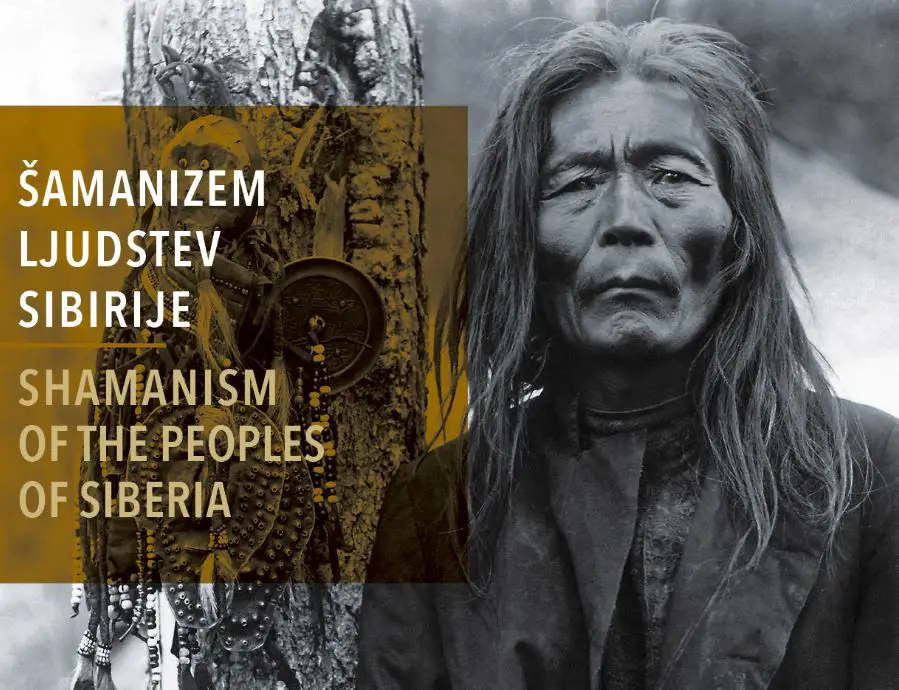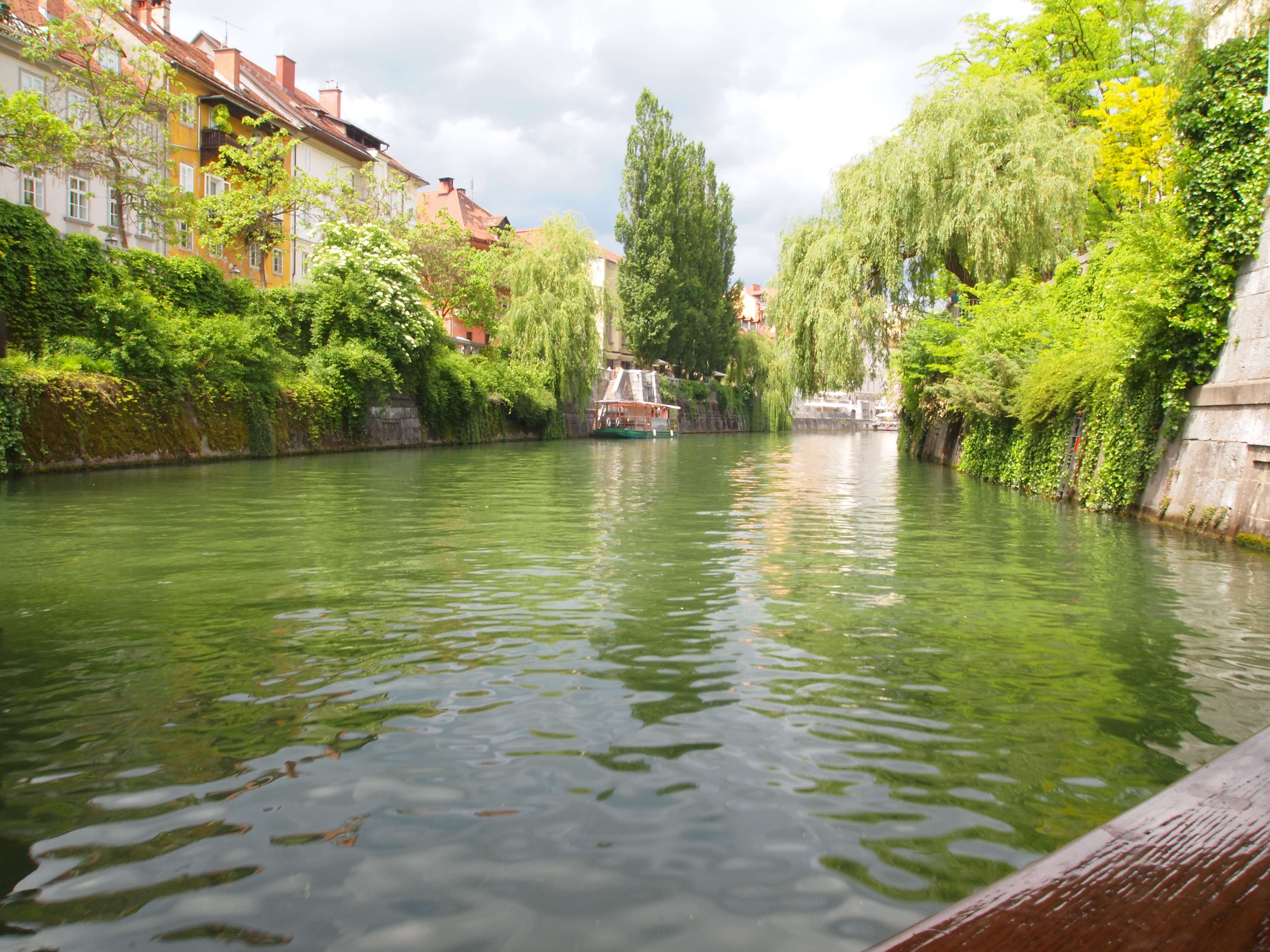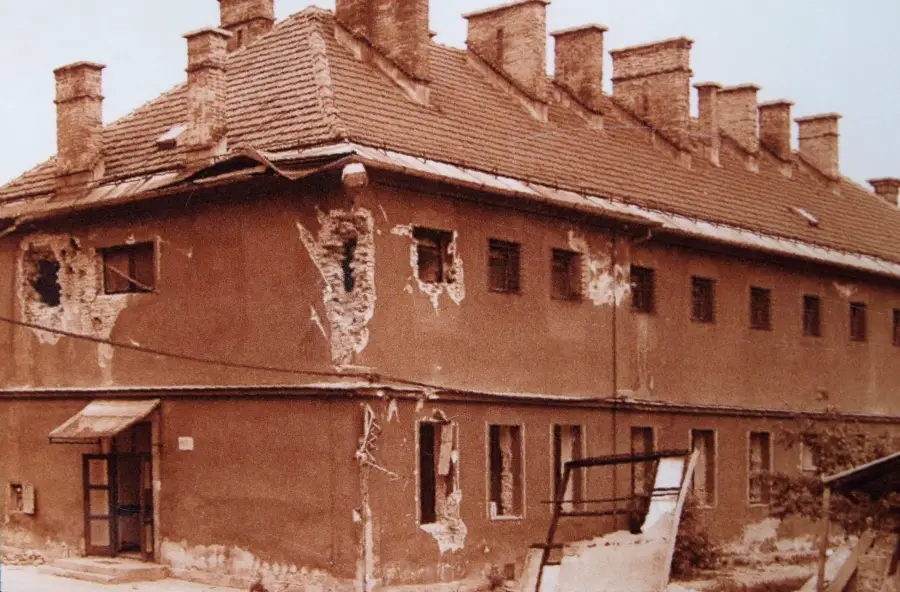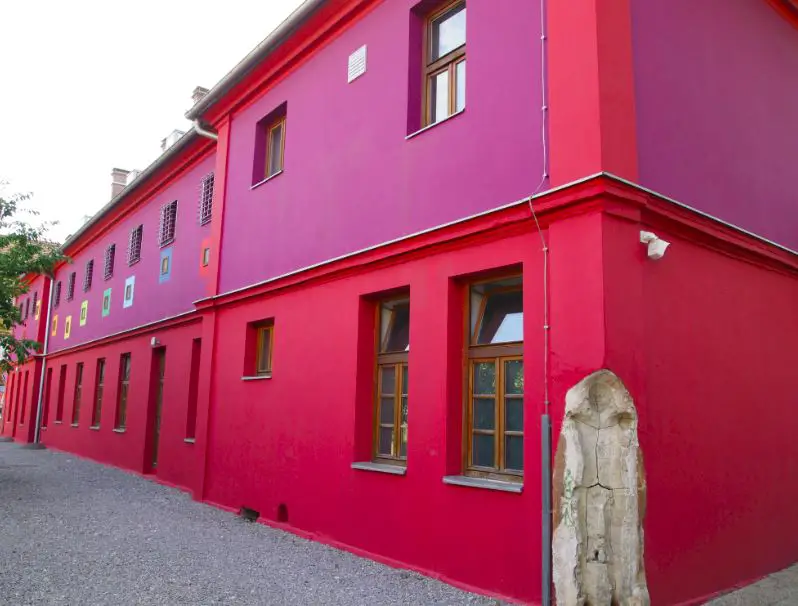Lifestyle
For anyone not planning on running but driving instead this weekend, here is some information on traffic blocks and diversions that will occur during the events of the Ljubljana Marathon.
For the main events, that is the 42.195km-long marathon and half-marathon, which will take place at the same time on Sunday, all streets on its route will be closed for the duration of the races.
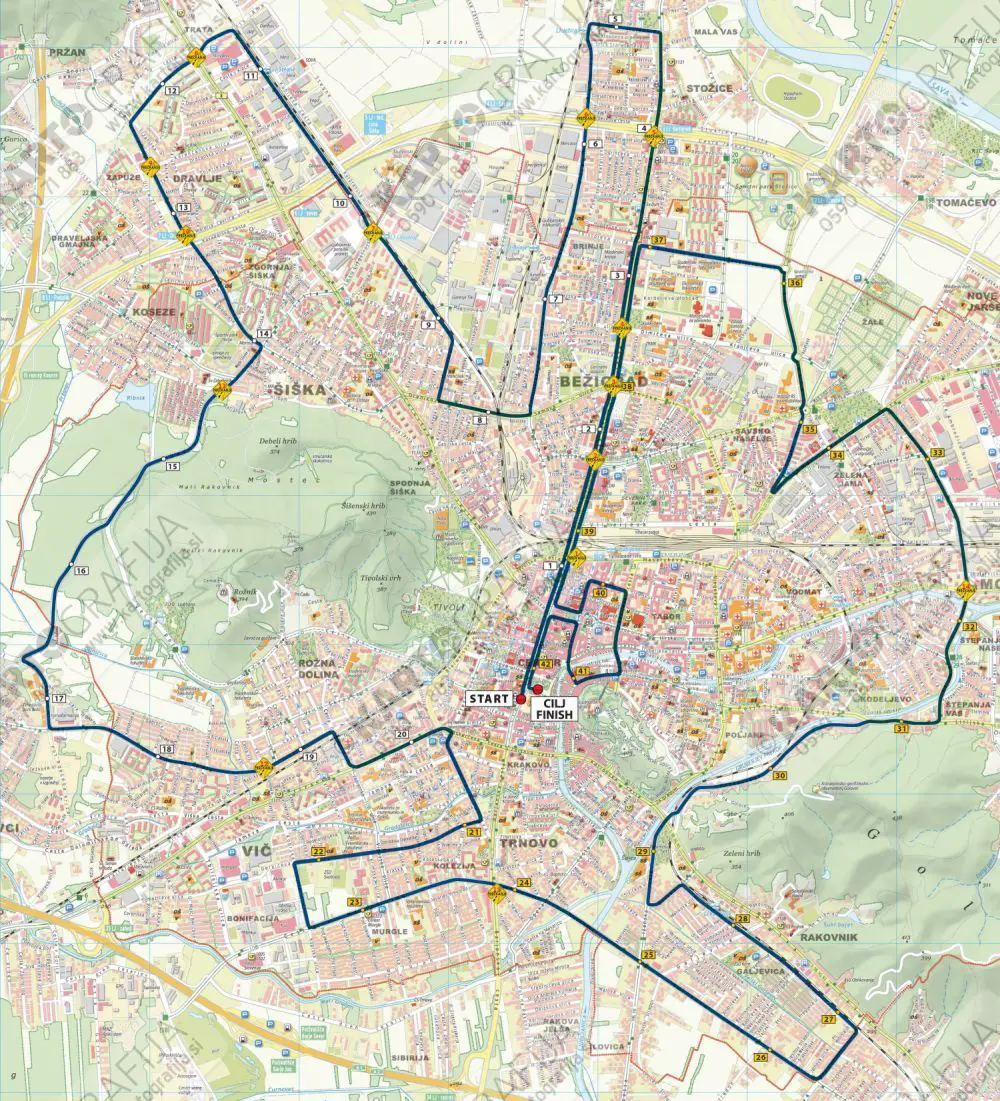
Both runs start at 10:30 and marathoners will have to finish their run in 5 hours. If runners arrive at the Aškerčeva mean-time station later than 2 hours and 15 minutes after the start they’ll be redirected to the finish at Congress Square and placed on the half-marathon ranking list. Drivers can expect streets to reopen at about 15:30 Sunday.
For details on each of the affected streets on the main route, please click here.
But as various marathon side events already begin on Thursday, one can expect some traffic trouble in the days preceding the main events, especially in the city centre.
Congress Square, the site of the main finish line, will be closed for traffic from Thursday, October 24, 08:00 till Sunday midnight, October 27.
Slovenska Street, the section between Aškerčeva and Gosposvetska, will close on Friday at 15:00 and reopen on Sunday night at 24:00. The Congress Square underground garage, however, will be accessible on Friday but not on Saturday and Sunday during most of the daytime.
Aškerčeva Street (between Slovenska and Groharjeva) will close on Saturday at 05:00 and reopen 16:00.
For further details and information on closed road crossing sites and the programme in general, please visit the Ljubljana Marathon website.
Ljubljana Fashion Week’s Fall edition is about to begin with the majority of shows to take place between Monday and Wednesday at the Museum of Architecture and Design at Rusjanov trg 7 in Ljubljana.
More than 30 domestic and foreign designers will be presenting their work, including a new collection from the Slovenian eco-friendly luxury brand Benedetti Life, which will take place on Thursday, 24 October, in Photopub’s Project Venue (Fotopubov projektni prostor) on Tivolska 44, Ljubljana.
In addition to the catwalk, the week also includes a two-day conference on the fashion industry that will explore some of the business models used by the industry worldwide, and approaches designed for the Slovenian scene.
For programme, tickets and free entry options, please click here.
In 1943 the first overseas brigade was formed in Carbonara, Italy. It consisted of 1886 fighters from the Slovenian 1st and 2nd battalions, 3rd Montenegrin battalion and 4th battalion, which was Croatian in origin. A month later when the brigade was deployed to the island of Hvar two more battalions joined in, mostly comprised of Slovenian soldiers.
In WWII fascist Italy arrested over 60,000 Slovenes from the occupied Western Slovenia and sent them to concentration camps as political prisoners, alongside several thousand Croats and Serbs. Furthermore about 10,000 Slovenes and Croats were mobilised and mostly deployed in penal work units or so-called special battalions as citizens of Italy, and an additional 6,000 antifascist activists from the Littoral and Istria, were sent to jails and special camps in the Italian hinterlands and islands, such as Lipari, Ustica and Ponza.
Italy capitulated in September 1943 and the internees came under the supervision of the occupying allied forces. Most of the Slovenes and other Yugoslavs located in the north of the country managed to escape to the Littoral and Istria, while the majority, located in the central and Southern Italy, were gathered by the Allies in various local camps and then moved to a single major camp in Carbonara near Bari, Italy.
Right after the capitulation of Italy, the National Liberation Army and Partisan Detachments of Yugoslavia (NLAPDY) delegation came to the camp and established its base there in agreement with the occupying Allied forces. The NLAPDY then negotiated to establish the self-organisation of life inside the camp and dismissed the Chetnik guards (mostly from the Serbian nationalist and royalist army, which collaborated with the Nazis on many occasions –- the main military force the Allies collaborated with in the territories of Yugoslavia until 1943). At the same time the camps committee of the Communist Party of Yugoslavia was established alongside the 1st. Overseas Brigade. In November of the same year the internees were moved to Gravina, which had its own command headquarters and guards, and was also a gathering point for all the subsequent arrivals of Yugoslavian expats, which continued to arrive there in the subsequent year.
The occupying powers and Marshal Badoglio, who was in charge of the Carbonara camp, disagreed on the transfer of former members of the Italian army – mobilized Slovenes and Croats – to the Yugoslav National Liberation Army, causing more of them to flee from Allied assembly camps to NLAPDY assembly points in Taranto, Naples, Foggia, Brindisi and then to Gravina.
About 20,000 of the Littorals and Istrians, who were not in contact with the NLAPDY during the liberation of Italy in Sardinia, were transferred to Corsica in spring 1944 and then to southern France, where they were detained until December 1945.
After being mobilized into the Italian army thousands of Littorals and Istrians were sent to the Italian occupied territories in African Ethiopia, Somalia, Eritrea and Libya. They were captured there by Allied troops and imprisoned in prison camps in Kenya, Sudan, Egypt, Algeria and some other countries. From there, after the invasion of Yugoslavia in April 1941, they joined the emerging Yugoslav royal army abroad. The latter lost homogeneity as a result of the controversial emigration of the Yugoslav government and the dual policy of General Draza Mihailović, and by that time a large part of these troops had also joined the NLAPDY overseas brigades in Italy.
Nazi Germany also mobilized Slovenes from its occupied territories of the Upper Carniola (Gorenjska), Styria (Štajerska) and Carinthia (Koroška), many of whom crossed over to the Allies after the invasion of Normandy in June 1944. Two thousand eight hundred of them established an overseas brigade in London.
In the years of 1943 and 1944, five overseas brigades were formed, and several other artillery and special units that participated in the fight against the occupying forces in Yugoslavia. In all the overseas units consisted of about 18,000 troops, more than 1,000 of whom fell in battle.
In December 1943, the 1st Overseas Brigade was transferred to the island of Korčula to defend it on December 22- 24, 1943, when the Germans landed on the island. The brigade suffered heavy casualties and retreated to Vis. Subsequently, members of the 1st Overseas Brigade participated in the seventh offensive and landing on Drvar, and then were deployed to Serbia, where they participated in the fight for the liberation of Belgrade. Following this operation, the 1st and 6th Proletarian Divisions, whose members had previously been members of the 1st Overseas Brigade, participated in the Srem front, then advanced through Slovenia towards Trieste.
Keep up with the daily news in Slovenia by checking the morning headlines here. What to find out what happened last week in Slovenia? Look no further.
The following schedule was prepared by the STA:
MONDAY, 21 October
LJUBLJANA - PM Marjan Šarec will take questions from MPs at the outset of a regular session of the National Assembly, which will continue until 29 October.
BELGRADE, Serbia - Interior Minister Boštjan Poklukar will start a two-day visit to Serbia for talks with his counterpart Nebojša Stefanović. On Tuesday, they will inspect joint Slovenian-Serbian police patrols at the Preševo crossing with North Macedonia.
LJUBLJANA - Former Maribor Mayor Franc Kangler will be heard by the parliamentary inquiry looking into alleged abuse in his prosecution.
LJUBLJANA - An international two-day conference on the consequences of First World War bearing on Central Europe will open as part of Year of Neighbourly Dialogue between Austria and Slovenia.
LJUBLJANA - The shareholders' meeting of NLB bank is to decide on a rise in remuneration for supervisory board members.
LJUBLJANA - The Ljubljana City Council will debate draft budgets for 2020 and 2021.
LJUBLJANA - The Ljubljana Fashion Week will start, until 25 October.
LJUBLJANA - The Biennial of Slovenian Independent Illustration will open; until 8 November.
LJUBLJANA - Bežigrad Cinema will launch a week of Japanese film by screening Tremble All You Want.
BOVEC - Chris Anthony will present his documentary on 10th Mountain Division of US Army below Mt Mangart.
TUESDAY, 22 October
TOKYO, Japan - President Borut Pahor is expected to visit Japan to attend the enthronement ceremony for Japanese Emperor Naruhito.
ZAGREB, Croatia - Defence Minister Karl Erjavec is to make a visit to Croatia to meet his counterpart Damir Krstičević.
LJUBLJANA - The National Assembly will resume session to debate amendments to the property appraisal act, among other things.
LJUBLJANA - Newspaper publisher Dnevnik will declare the winner of the Gazelle Award for Slovenia's fastest-growing company; PM Marjan Šarec to be on hand, along with three ministers.
LJUBLJANA - Vienna Days in Ljubljana will get under way with a concert by the Klangkollektiv orchestra, to be declared open by Vienna Mayor Michael Ludwig; until 24 October.
WEDNESDAY, 23 October
LJUBLJANA - The National Assembly will debate amendments to the personal income tax act and corporate income tax act.
MARIBOR - Gertrud Rantzen, the head of the German-Slovenian Chamber of Commerce, will talk about the countries' cooperation and the economic outlook for 2020.
LJUBLJANA - Chile Eboe-Osuji, president of the International Criminal Court, will visit Slovenia for meetings with Foreign Minister Miro Cerar and Justice Minister Andreja Katič.
LJUBLJANA - A civil initiative is expected to present signatures in support of an increase in pensions to PM Marjan Šarec and National Assembly Speaker Dejan Židan.
LJUBLJANA - A meeting between the mayors of Ljubljana and Vienna, Zoran Janković and Michael Ludwig, will launch a two-day conference themed Vienna and Ljubljana, cities tailored to people.
LJUBLJANA - A press conference of the 30th Ljubljana International Film Festival, to be held between 13 and 24 November.
LJUBLJANA - The Music Academy of the University of Ljubljana will mark its 80th anniversary.
LJUBLJANA - An international three-day conference on Slovenian studies will kick off.
LJUBLJANA - The Statistics Office will release the latest consumer confidence index.
LJUBLJANA - The 50th iteration of the fair Nature-Health will open, to run until 26 October.
THURSDAY, 24 October
BRUSSELS, Belgium - Defence Minister Karl Erjavec will take part in a two-day NATO ministerial.
STRASBOURG, France - National Assembly Speaker Dejan Židan will take part in the European Conference of Presidents of Parliament from Council of Europe countries, until 25 October.
LJUBLJANA - The National Assembly will debate amendments scraping bonus for social benefit recipients who work.
LJUBLJANA - The Slovenian World Congress will hold a two-day conference of Slovenian scientists and businessmen from all over the world.
MARIBOR - Pre trial hearings for former NBKM bank CEO Matjaž Kovačič and other former executives and several Croatian citizens in the Croatian affairs case.
KRANJ - The Slovenian Writers' Association will present the Jenko Prize for best poetry collection for the past two years.
LJUBLJANA - The first edition of the Slovenian sign language grammar book will be launched.
FRIDAY, 25 October
LJUBLJANA - The National Assembly will debate amendments to pension and labour market laws and amendments related to student work and scholarships.
LJUBLJANA - The Statistics Office will release the latest business sentiment index.
LJUBLJANA - A two-day conference on palliative care will get under way.
SATURDAY, 26 October
LJUBLJANA - Actor Rade Šerbedžija will give a concert at Cankarjev Dom with his ensemble Zapadni Kolodvor.
SUNDAY, 27 October
MARIBOR - The Maribor Theatre Festival will come to a close with an awards ceremony.
LJUBLJANA - The public broadcaster RTV Slovenija will hand out the Ježek Award for lifetime achievement in various genres of radio and TV creativity.
LJUBLJANA - The Ljubljana Marathon, the biggest running event in the country.
In 1834 the first trade school in the Slovenian lands was established in Ljubljana by Jacob Franz Mahr, its owner and first principal. The language used in the school was German, and the school was intended for wealthier kids of the local bourgeoisie to learn trade skills on the one hand, and assimilate on the other, and in line with Austrian de-nationalisation efforts targeting the empire’s Slavic majority subjects.
In 1855 Mahr bought one of Ljubljana’s most renowned hotels at today’s Krekov Trg by the central vegetable marketplace, where he moved his school. The building soon gained its current name, that is the Mahr House, and in 1865 the upper two floors were built.
In 1918 the Mahr House was taken over by the city government, which moved in several of its offices. Since 2003 the ground floor of the house hosts one branch of the Slovenian Tourist Information Centre, while the upper floors have been transformed into several apartments.
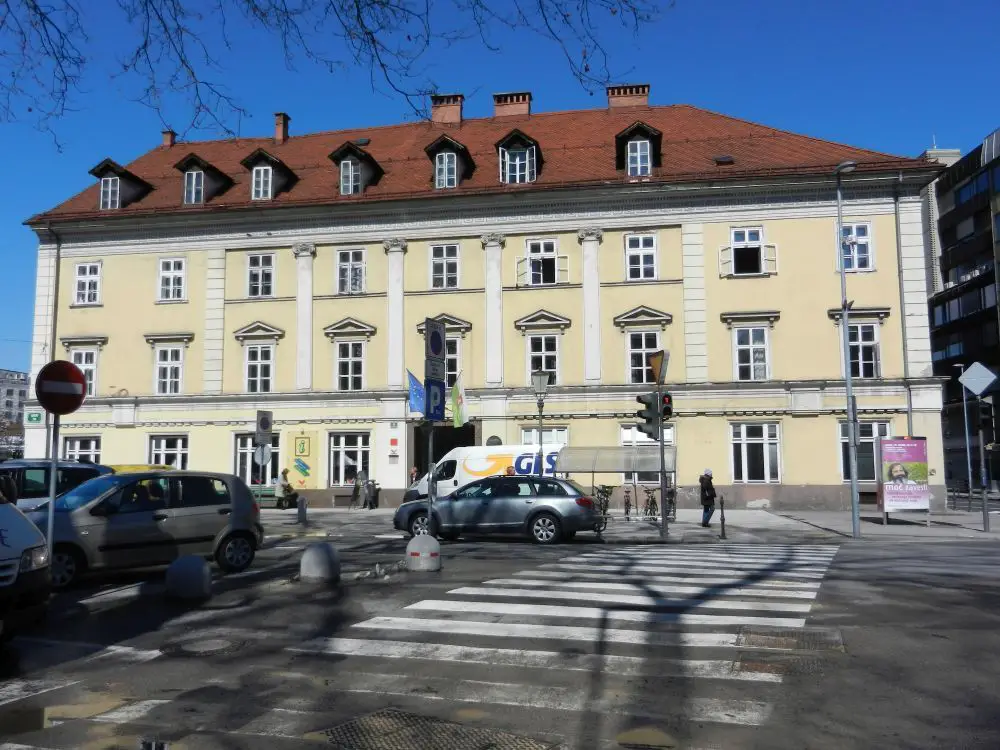
From 1865 to the WWI the school also ran a bilingual department, following the ultraquistic doctrine of introducing the primary language of the Slovenian pupils as a tool for more effective learning in the preferred language, German. Ultraquism as denationalising bilingualism in schools still remains a relevant issue of the Slovenes living in Austrian Carinthia.
The rarely used word ultraquism originates in the Latin sub utraque specie, meaning “in both kinds”, and originally referred to a Christian dogma proposed by pre-protestant Hussites (after the Czech Jan Hus) who maintained that the Eucharist should be administered “in both kinds”, that is as bread and wine to all the congregation, including the laity, since at the time the wine was only for the priests to enjoy.
If you're not in town for the week of this guide (21- 27 October, 2019) then you can see all the editions here, and if there's event or activity you want to promote in a future edition of What's on in Ljubljana please get in touch with me at flanner(at)total-slovenia-news.com or try and find me on Facebook. If you want something a little different and easy to print, then a comprehensive PDF of events for the next seven days, as prepared by Ljubljana Tourism, is here. If you're in town and want to follow the news then check out our regular morning headlines for Slovenia here.
The annual Month of Design continues until 8 November, with details here.
Next Sunday, 27 October, the Ljubljana Marathon comes to town, so expect major disruption on the roads, and there are also some related events on Saturday.
There’s not much in Visit Ljubljana’s official schedule for the week beyond Open Kitchen on Friday, which I think is the final one of the year. But that doesn’t mean there isn’t plenty to do around town, as you’ll find if you scroll or jump to the regular listings on click through on the various venues. A small selection of things is also highlighted below.
A new show at Plečnik’s House shows visualisations of some the buildings and structures he wanted to build in Ljubljana, but was unable to. See some of those here.
Verdi’s La Traviata is on stage at the SNG Opera & Ballet on Monday, 11:00 in the morning, while on Saturday (19:30) they have Smetana’s The Bartered Bride.
Wednesday, 20:00, Kino Šiška is hosting two solo shows by members of Swans, Michael Gira and Norman Westberg. Sunday evening the same place, same time, will see The Brand New Heavies.
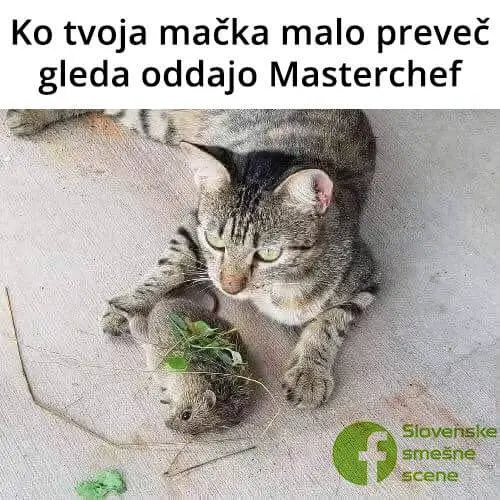
Learn Slovene with memes, here
Friday, 18:30, will see the start of another evening of fun at Orto Bar, with a line-up that includes Deströyer 666, Dead Congregation, and Nocturnal Graves. You can see the headline act above.
Interested in Slovenian craft beer? Find out what’s new with Damir, of Lajbah and more.
Saturday night Klub K4 will have a live set from Dacho & Levanael.
New films opening this week include Haunt, a reminder that Halloween is coming up, and Bacek Jon film: Farmagedon, aka Shaun the Sheep Movie: Farmageddon, which is most likely dubbed on all screens.
While the Old Town is quaint, and full of music, where does Ljubljana really shop? One popular answer is BTC City, a vast complex of malls, entertainment facilities and more, including more than 70 different food vendors, offering everything from Slovenian to Thai, Indian to Italian, Mexican to Chinese. Check out my recent visit here.
Looking for something different to eat? Trubajeva cesta, running right by Dragon Bridge, has the greatest concentration of "ethnic food" places in Ljubljana, and thus perhaps the country. Check out our walk through guide as of June 2019.
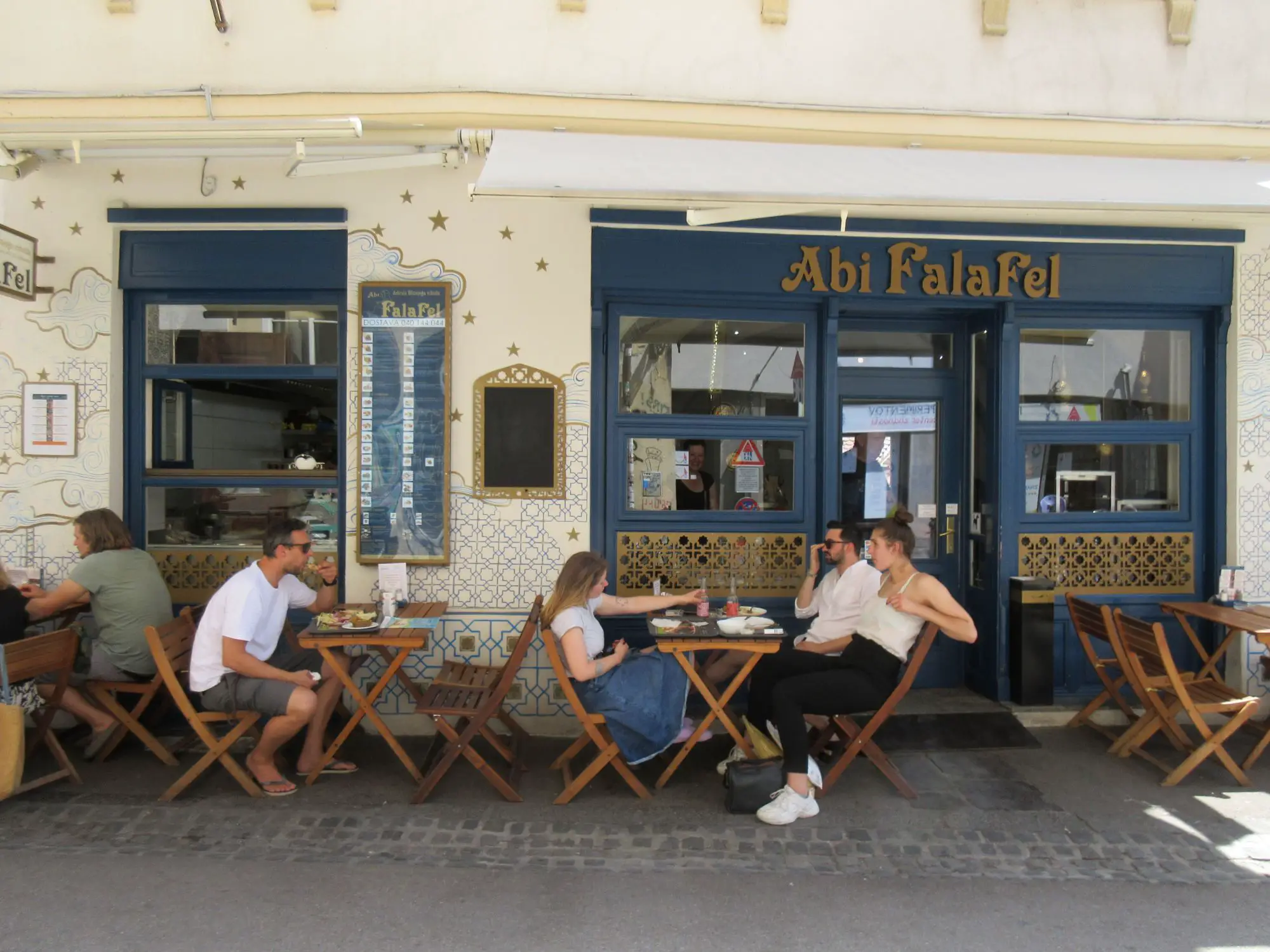
Photo: JL Flanner
Ljubljana is forecast to be the fastest-warming city in the world over the next few decades.
You're in the town of Slavoj Žižek, but do you find yourself lost when conversation turns to the philosopher? If so, check out our collection of quotes and clips to learn more.
Screenshot from YouTube
- Cinemas and films
- Clubbing
- Live music
- Theatre and dance
- Harm reduction and drug testing
- Things to do with children
- LGBT+ Ljubljana
- Ljubljana Castle
- Museums and galleries
- Other things to do in Ljubljana
- Daytrips
- Getting around
- Emergencies
Cinemas and films
You can read about all the cinemas in town here, while a selection of what’s playing this week is below, and note that kids' movies tend to be shown in dubbed versions, while non-English language movies for older viewers will have Slovenian subtitles.Parents should also pay attention to Kinobalon, which is Kinodvor's regular weekend series of film screenings and events for children, from babies on up, with special parent/child events, "first time in a cinema" screenings, and babysitting. Learn more about it here, and see the current schedule here.
Note - most children's films will be dubbed (sinhronizirano) - for subtitles look for 'podnapisi'.
Kinodvor –This is an arts cinema, not far from the train station, that shows new features as well as hosting the occassional festival.
Kinoteka – And not far from Kinodvor you can find this revival cinema, which shows art house classics along with some deep dives in the archives.
Kino Bežigrad - A relatively small theatre, but one which usually has the biggest of the new releases.
Kolosej -The multiplex out at BTC City Mall shows all the big movies, with well over a dozen titles on the schedule, although note that there are far more movies than screens, so some of the older ones mayonly be playing once or twice a week.
Komuna – The cinema in a basement behind Nama department store shows two or three different features a week, usually including the biggest titles.
Looking for a souvenir you'll really enjoy? Take a look at Broken Bones Gin, the first gin made in Ljubljana (learn more here, and try it at the Central Market or selected downtown bars).
Friday night SHXCXCHCXSH will be playing at Klub K4
Clubbing
Compared to some European capitals it can seem that nightlife in Ljubljana ends rather early, especially along the river, but there are still bars that stay open late and clubs were you can dance until dawn, and perhaps the best place to stumble across something interesting is the legendary Metelkova. Be aware it's a grungy kind of place and not for all tastes, but also that there's considerable variety to found within the various clubs there, from death metal to electropop, gay cabaret to art noise. You can read "the rules" of the place here. And if you're curious about how the place started then read our story, and look at some pictures, about last year's 25th anniversary.
DJs at the top of the Castle (more)
Božidar - DJ events aren't too common here, but when they happen they often have a big name.
Channel Zero – DJs shows here include regular dub nights as well as electronic music.
Gala Hala – Another Metelkova venue, you can sometimes hear bhangra and Bollywood here, but more often funk, hip hop, breakbeat and so on.
Klub Cirkus – The more commercial end of clubland, and a venue that aims to serve the student party scene. Expect house, anthems, and bangers.
Klub K4 – The home of techno, old and new, along with various other electronic genres,
Koncertna Dvorana Rog– There are irregular DJ sets at this underground (not literally) venue at the far end of Trubarjeva cesta, and they range from techno to goa to drum'n'bass.
Orto Bar– 80s and 90s throwback nights can often be found here, along with rock-based DJ sets.
Live music
Balassi Institute – Free Hungarian music, when available, from the Hungarian cultural institute just a short walk downriver from Dragon Bridge.
Cankerjev dom – The main arts venue in the country hosts classical, opera jazz, folk and occassinally pop.
Cvetličarna – Regional pop and rock concerts can be found here.
Channel Zero – This Metelkova venue sees live shows from punk and rock bands, as well as others.
Gala Hala – Another Metelkova venue with indie bands of various styles.
Kino Šiška – One of the top live venues in the city, with a varied programme that include indie, rock, pop, experimental, hip hop, and so on.
Klub Gromka – Live music is often metal, from sludge to stoner, death to thrash, while punk bands also appear, as do others.
Križanke – The venue that hosts the Ljubljana Festival often has classical music, and some rock, in the open air.
Ljubljana Castle – Jazz, funk and pop every Friday night.
Orto Bar– The home of live rock, metal, punk and other guitar-based genres.
Pinelina dnevna soba – LIve music is rare here, but it does happen.
Slovenska filharmonija– Classical music in the centre of town.
SNG Opera and Ballet - As the name suggests, here you'll find the best of opera and ballet in the country.
Španski borci - While dance is more common here, they also have some contemporary and experimental music shows.
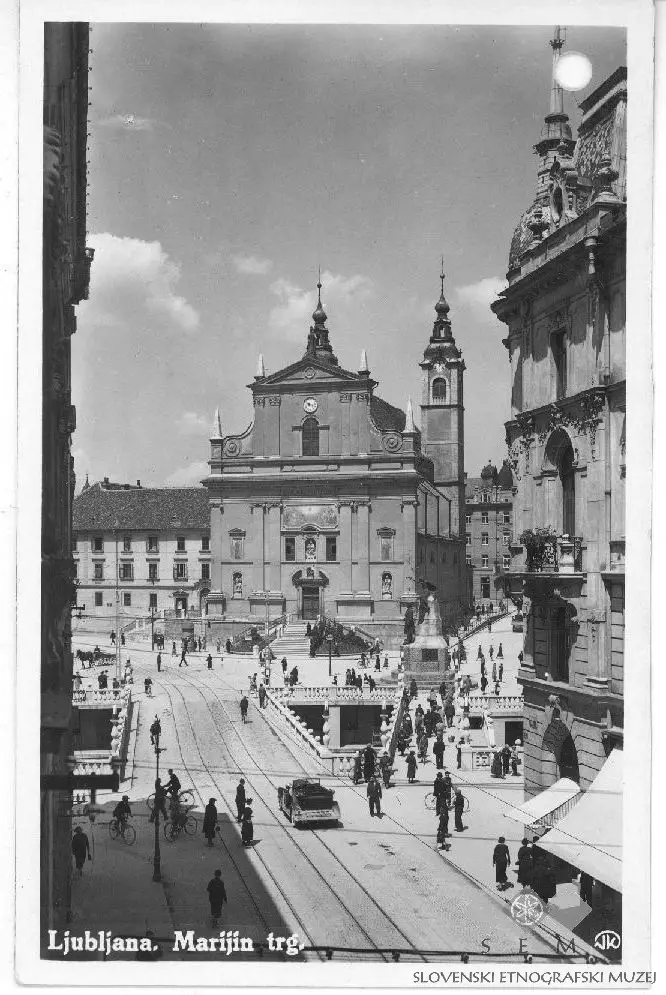
See more pictures of Old Ljubljana here
Theatre and dance
Cankerjev dom- The main arts venue in the country always has something of interest going on.
Gledališče IGLU - IGLU Theatre – Saturday night this group is usually putting on an English improv show somewhere in town, but it’s generally promoted after this is written, so check the Facebook before putting on your shoes.
Kino Šiška – One of the top live venues in the city also hosts some dance performance, often of the more experimental variety.
Mini Teater Ljubljana –The English schedule of varied performances, for adults and children, for the month is here.
Ljubljana Puppet Theatre - Puppetry has a long and noble tradition in Slovenia, and you can see performances for children and adults (including non-puppet shows) drawing from the Theatre's rich repetoire as well as new productons.
SNG Opera and Ballet - As the name suggests, here you'll find the best of opera and ballet in the country.
Španski borci - The home ofcontemporary dance(and the EnKnapGroup) in Slovenia.
Pocket Teater Studio– There are regular flamenco evenings at perhaps the smallest venue town, but note that the number of seats is very limited, and thus you should make a reservation via This email address is being protected from spambots. You need JavaScript enabled to view it. or 070 325 522.
Harm reduction and drug testing
Drogart is an organization that aims to minimise harm on the party scene, and offers drug-testing services and reports on their webpage. It’s in Slovene, but you can Google translate it or work things out yourself, and our story on the group is here.You can find the latest warnings on fake drugs and high strength pills and powders (in Slovene) here. However, be aware that all the usual drugs are illegal in Slovenia.CBD is legal, though, and our retailer of choice can be found on Trubarjeva cesta - read more about Sena Flora here.
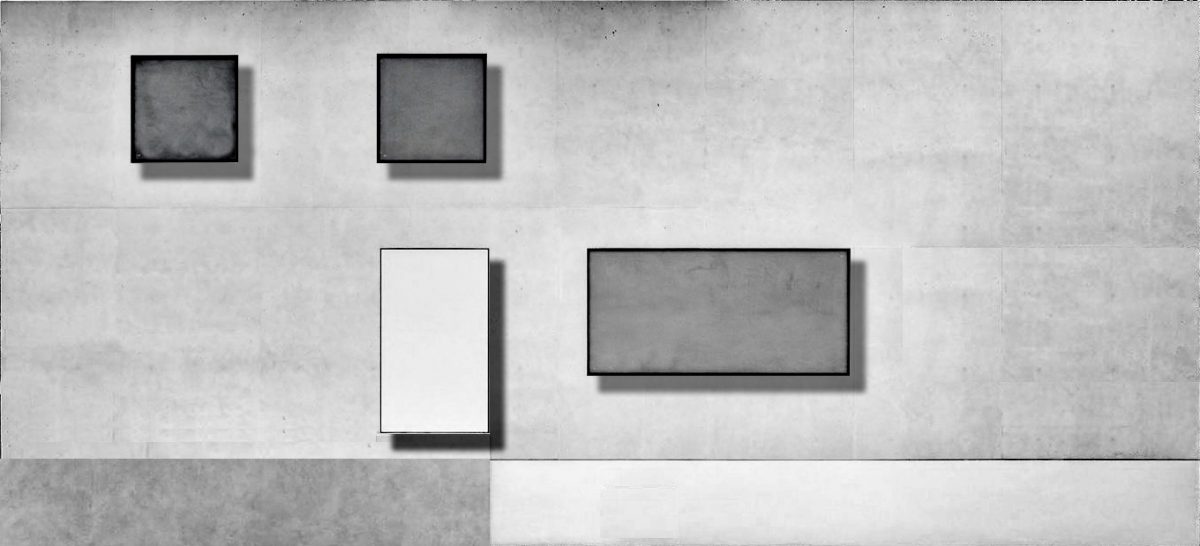
Photo: Igor Andjelič. See more of his work here
Things to do with children
You can find our Top 12 list of things to do with kids in Ljubljana here. If want to read more about the philosophy behind the wonderful House of Experiments look here, while our trip to the Museum of Illusions is documented here, and there’s always riverside walks, pizza and ice cream. With regard to the latter, take a look at our guide to six places that serve good ice cream in winter, and thus are serious about the dessert.
Mini Teater Ljubljana – The season sees a lot of puppet performances for children, in Slovene, at this theatre not far from Križanke. The English schedule for the month is here.
Ljubljana Puppet Theatre - The puppet theatre near the Central Market and next to the Castle funicular has a full programme or shows, for children and adults, with the schedule here.
LGBT+ Ljubljana
If you're looking for more general links on "gay Slovenia", including a history of the scene and various projects, then you can find that here, while our stories about the community can be found here.
Klub Monokel – This lesbian bar in Metelkova is open every Friday, although sometimes there are other events
Klub Tiffany –And the gay bar next door is also open on Fridays. Other things coulds also be planned, so click on the name to find out.
Pritličje – This seems to be the only "always open" LGBT-friendly cafe / bar / events space in town, and perhaps the country, so it's a good thing it's such a good one, open from morning to night, and with fliers and posters letting you know what's happening outside the narrow confines of, say, a general interest online what's on... guide.
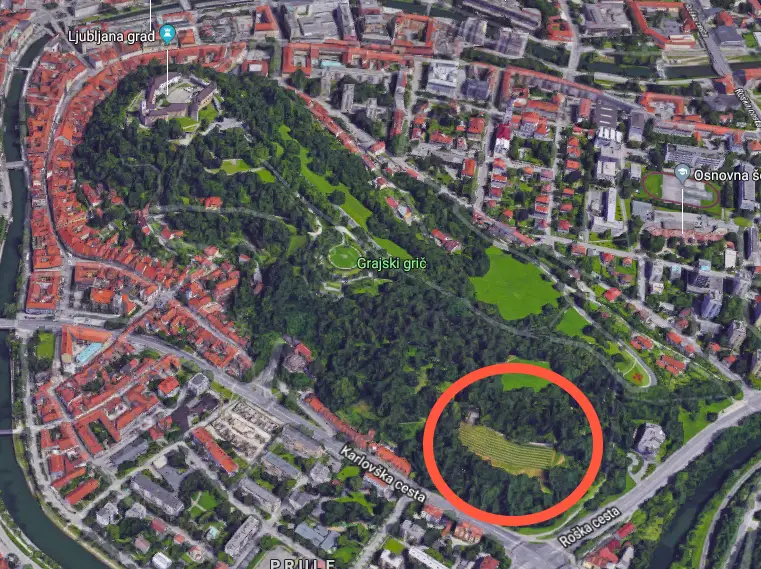
Screenshot from Google Maps, showing the location of the Castle vineyard
Ljubljana Castle
The city’s main attraction is said to be the top tourist draw in the country overall, and to my mind it earns a spot near the top just for the history and views. But beyond that the current owners, the City of Ljubljana, have laid out a varied, interesting and enjoyable programme of events, one that rewards regular revisits. On until 17 November Mighty Guardians of the Past: Castles in the Slovenian Lands, a presentation that delivers on the promise of its title.
I try and get up there every Saturday morning to clear my head and move my feet on the trails, and never tire of that end of the hill. At the other end, where the Castle sits, there’s a lot more than fresh air on offer. There are guided tours, restaurants, a café, Castle museum, puppet museum, a Watchtower you can climb to the highest point in the city, art shows, dances, live music, movies under the stars, festival days and more – enough to reward multiple trips up the hill through the year. All of these activities and events can be found on the Castle website, while on TSN you can see “25 things to know about Ljubljana Castle” here, and “Ten Ways to Enjoy Ljubljana Castle” here.
Museums and galleries
Most public galleries and museums are closed on Mondays, although not the National Museum.
From 15 October to 17 November various venues around town will be hosting events related to Transform 2019: Trans-form:action, featuring students from academies from Zagreb, Sofia, Bucharest, Skopje, Istanbul and Ljubljana. Details.
Bežigrajska galerija 2 – Take a trip to Vodovodna cesta 3 between 3 October and 13 November you can see “selected works by the Prešeren awards recipients originating from Slovenian Istria, coming from the collections of the Piran Coastal Galleries and the Prešeren Award Winners of Fine Arts Gallery Kranj.” The free to enter show includes the following work.
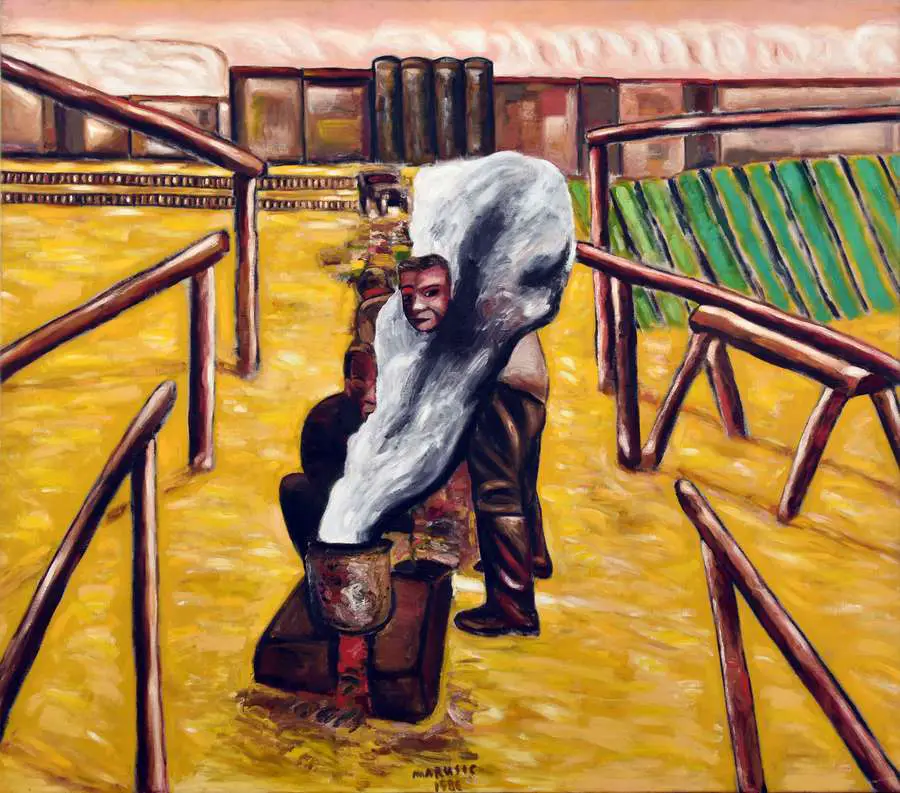
Živko Marušič, Ujetniki dima III, 1986, oil on canvas, 130 x 148 cm © Marko Tušek
Cankerjev dom – On until 3 March 2020 there's an exhibition on Ancient Greek Science and Technology. Details here.
Plečnik's desk. Photo: JL Flanner
Plečnik’s House is worth a visit if you want to learn more about the architect who gave Ljubljana much of its character, and it's also in a really nice part of town, Trnovo, just a short walk or cycle upriver. Read about our guided tour here. On until January 2020 you can see plans and models for some of the things Plečnik planned but never built in Ljubljana. Take a look at some pictures here.
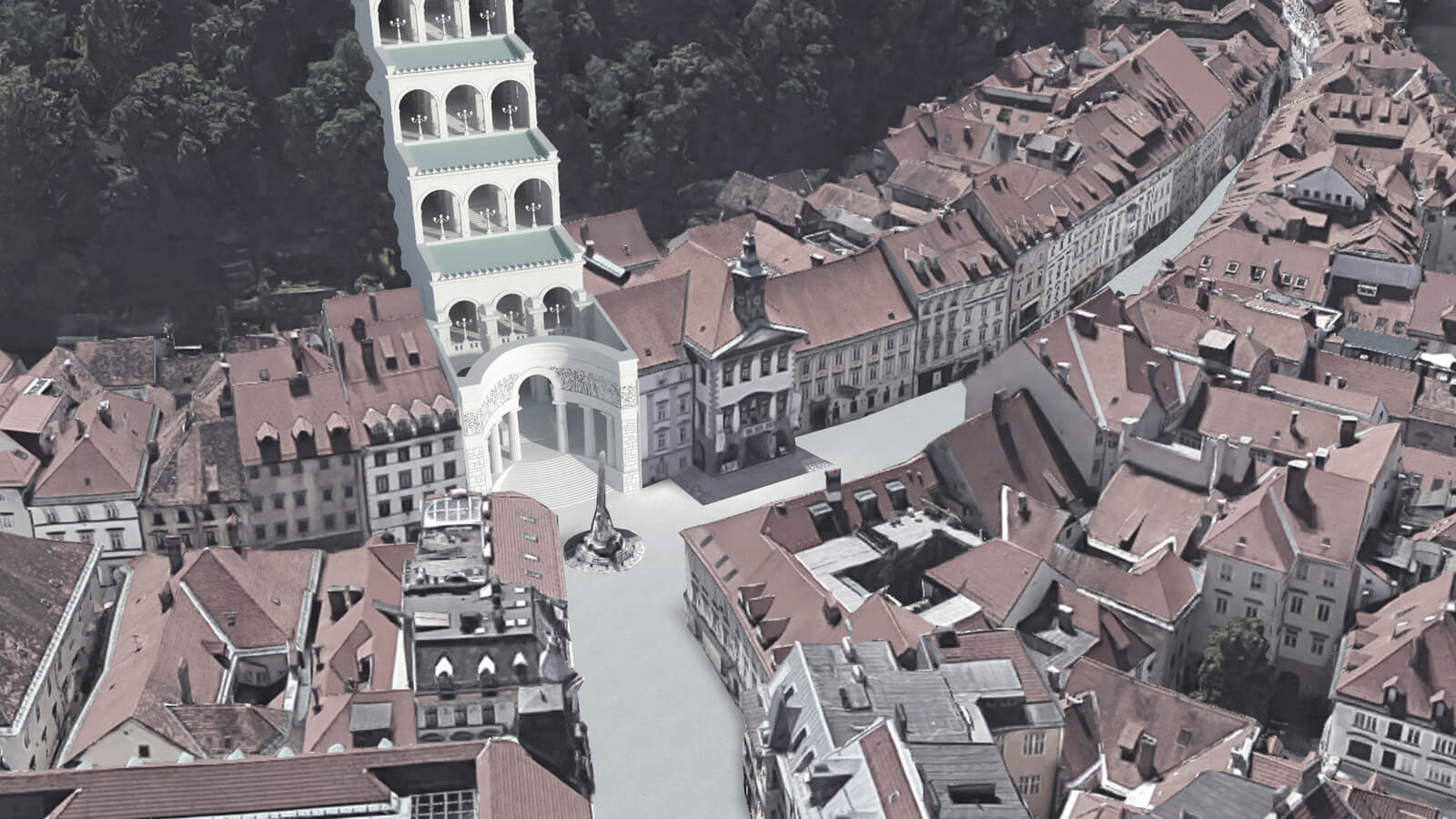 Image: Nejc Bernik. ZRC-SAZU
Image: Nejc Bernik. ZRC-SAZU
Balassi Institute – The Hungarian culture centre is next to a Spar and Hofer, and not far from Dragon Bridge, and always has something interesting going on. Learn more here. This month there's also an exhibition with more works like the one shown below for a show described as follows: “The concept of the exhibition “Awkwardly Close” in Balassi Institute is exactly the self-conscious unease coming from artistic and content similarities between the works of Kata Bereczki, and the Slovenian artistic collective Son:DA."
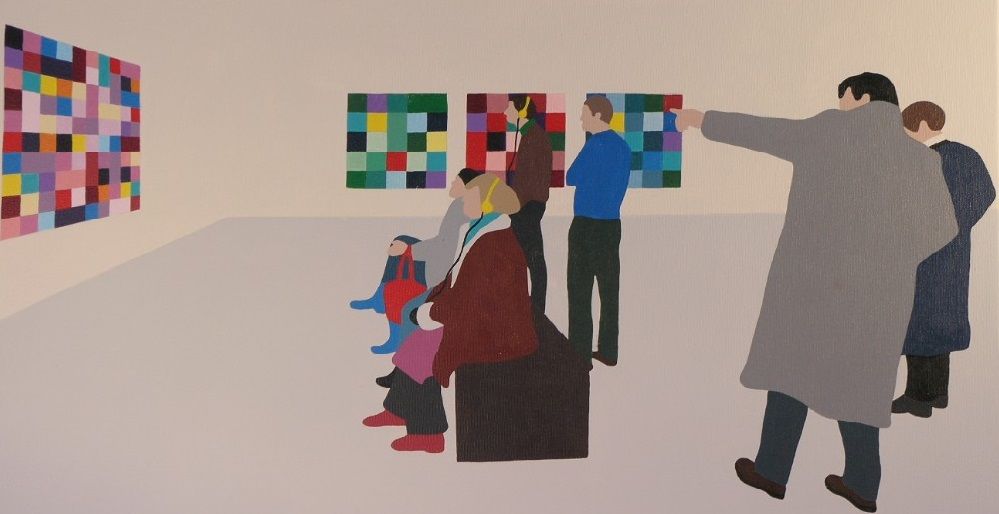
City Gallery - Until 10 November you can see After the Canal, there was only "our" world: “The exhibition is an invitation to explore a variety of historical and geographical connections between Europe, especially its Easts, and the Middle East, particularly Egypt, with the Suez Canal as the trigger, while contemplating their reflections in the mirror of the present.”
City Museum – The Museum in French Revolution Square an interesting permanent exhibition on the history of Ljubljana, from prehistoric times to the present day, with many artefacts, models and so on that bring the story alive.You can read about my visit here
The Faces of Ljubljana in the City Museum. Photo: JL Flanner
Galerija Kresija – The gallery between the Triple Brdge and City Hall has some architecture-related activities this week.
Galerijia Y – Walk along to Trubarjeva cesta 79 and until 19 October you can see some contemporary art from four Slovenian painters, with all the works for sale. See some of them here.
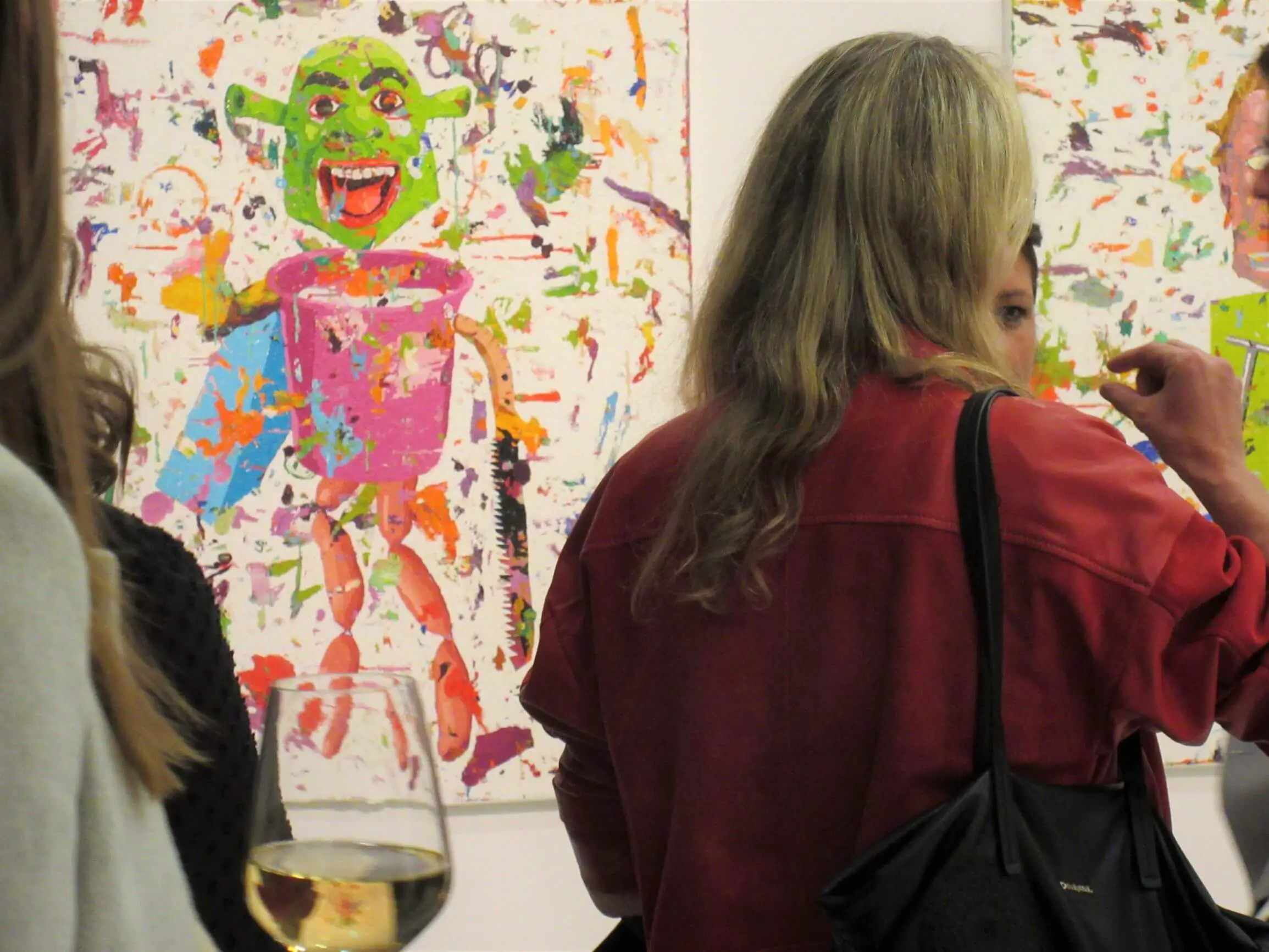
Drink like a pro - find gallery openings. Photo: JL Flanner
MAO – The Museum of Architecture and Design has much of what you'd expect, along with some temporary shows and a good cafe.
Moderna galerija – The main branch of this gallery, to be found near the entrance to Tivoli Park, has a good collection of modern art, as well a nice café in the basement. The 9th Triennial of Contemporary Art U3 is also on here until 12 January 2020. Titled Dead and Alive: “The exhibition unfolds around three contradictory states of now – the dead and alive state of conceptualism, analogue and liquid materiality, and the subconscious as the battlefield of cognitive capitalism. Because – how do art and avant-garde progress? By making sensible what is beyond. At the end of the day, Dead and Alive is a quantum time search for an engaged form.” More details here, on one of the works on show below.
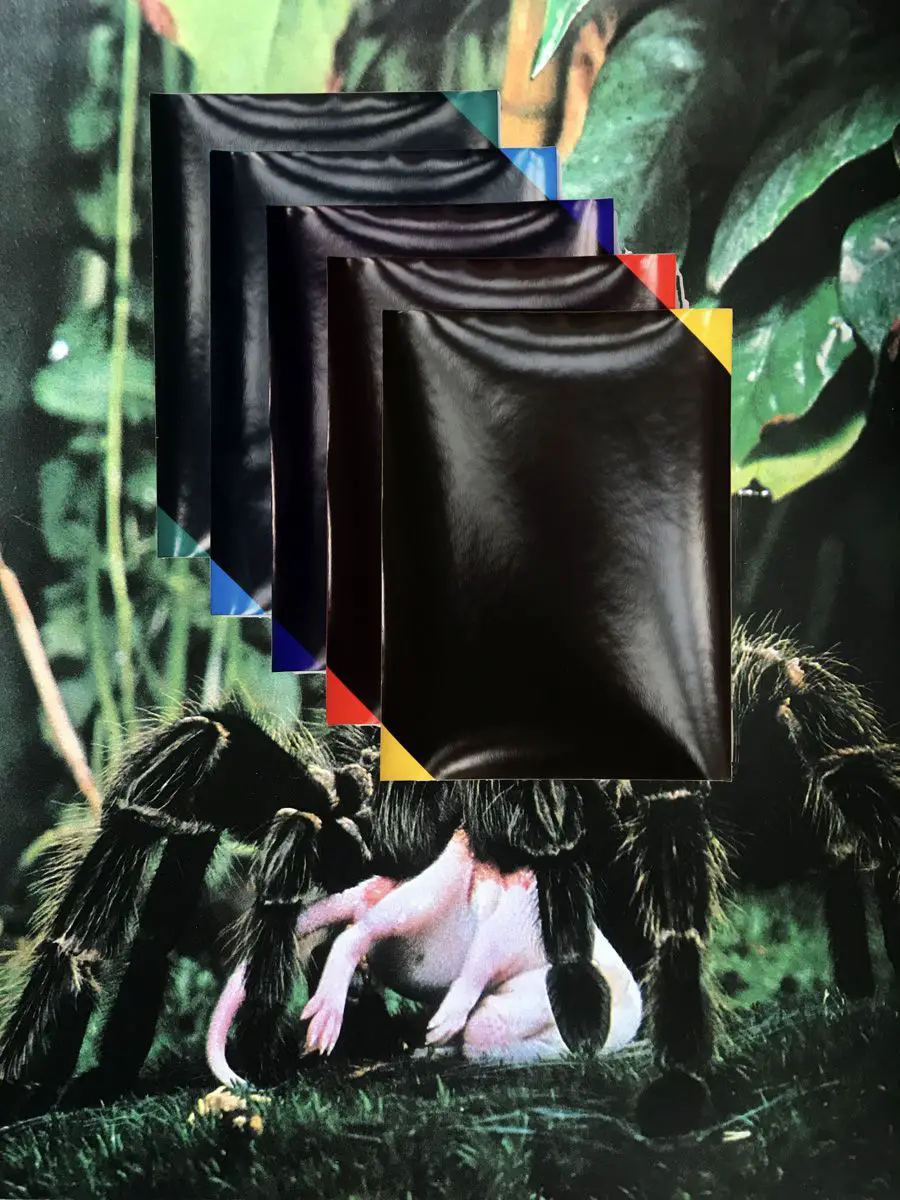
© Aleksandra Vajd, Collage by K. E. Graebner Nature the Unknown Acquaintance (1971) and a unit of five hand-dyed photograms titled: ‘rivalry of superior vs. inferior’, 2017
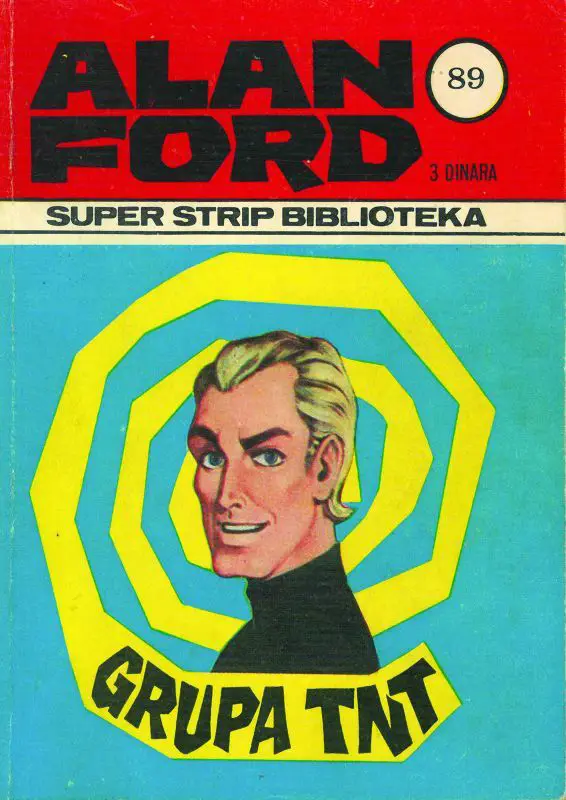
Alan Ford was recently at the National Gallery - read more about this comic book here.
National Gallery – The country’s main gallery has “the best” of what’s on offer from the Middle Ages to non-contemporary modern visual arts, and is in a great location for exploring other areas, just by Tivoli Park and opposite the main branch of the Moderna galerija. You can read about our visit to the room containing sacred art from the Middle Ages here. Art for the Brave New World runs until 5 January 2020: “The exhibition will present the beginnings and development of an early government art collection in Slovenia, which, despite the economic and political crisis, was created in the 1930s by artistic and professional personalities gathered around Dr Marko Natlačen, the last ban of the Drava Banovina.”
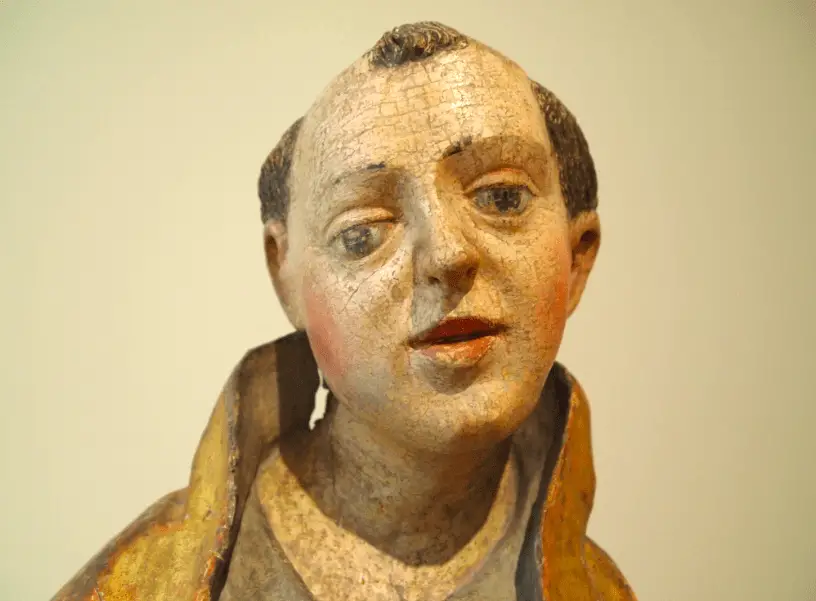
JL Flanner
The real Robba Fountain can be found in the entrance to the National Gallery - the one you see in the Old Town is a genuine fake, as seen below and reported here.
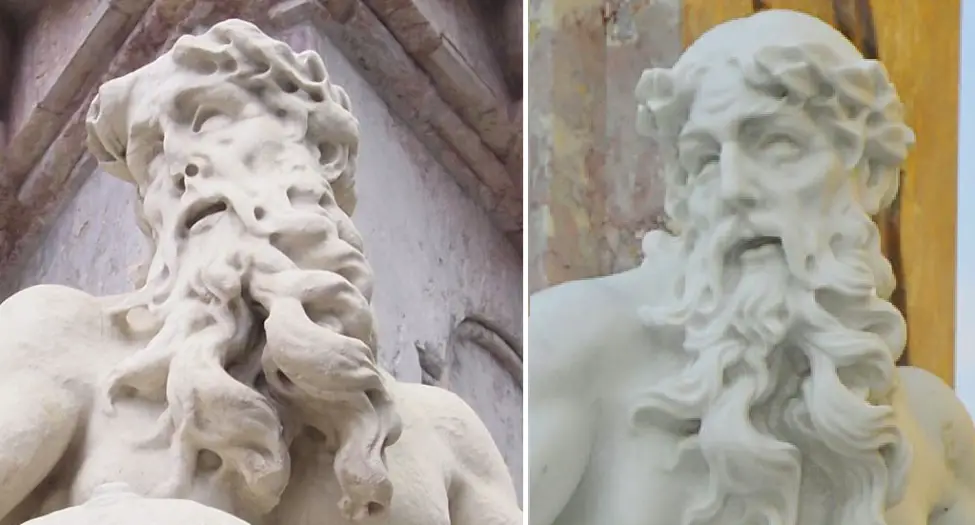
Photo: JL Flanner
National Museum of Slovenia – There’s plenty to see in the permanent collection here, from Roman times, Egypt and more. Running until 3 November is Roma Aeterna: Masterpieces of Classical Sculpture. With sculptures from the collection of the Santarelli family in Rome, ranging from the age of the Roman Empire to that of neoclassicism. Meanwhile, the museum's Metelkova branch, located between one branch of the Moderna galerija and the Ethnographic Museum has some rooms on Church art, furniture and weapons, with the latter including more guns than you'll see anywhere else in town, and quite a thrill if coming from a nation where such objects are not household items.
Natural History Museum – On until the end of December 2019 is Our Little Big Sea, which takes a look at the oceans.
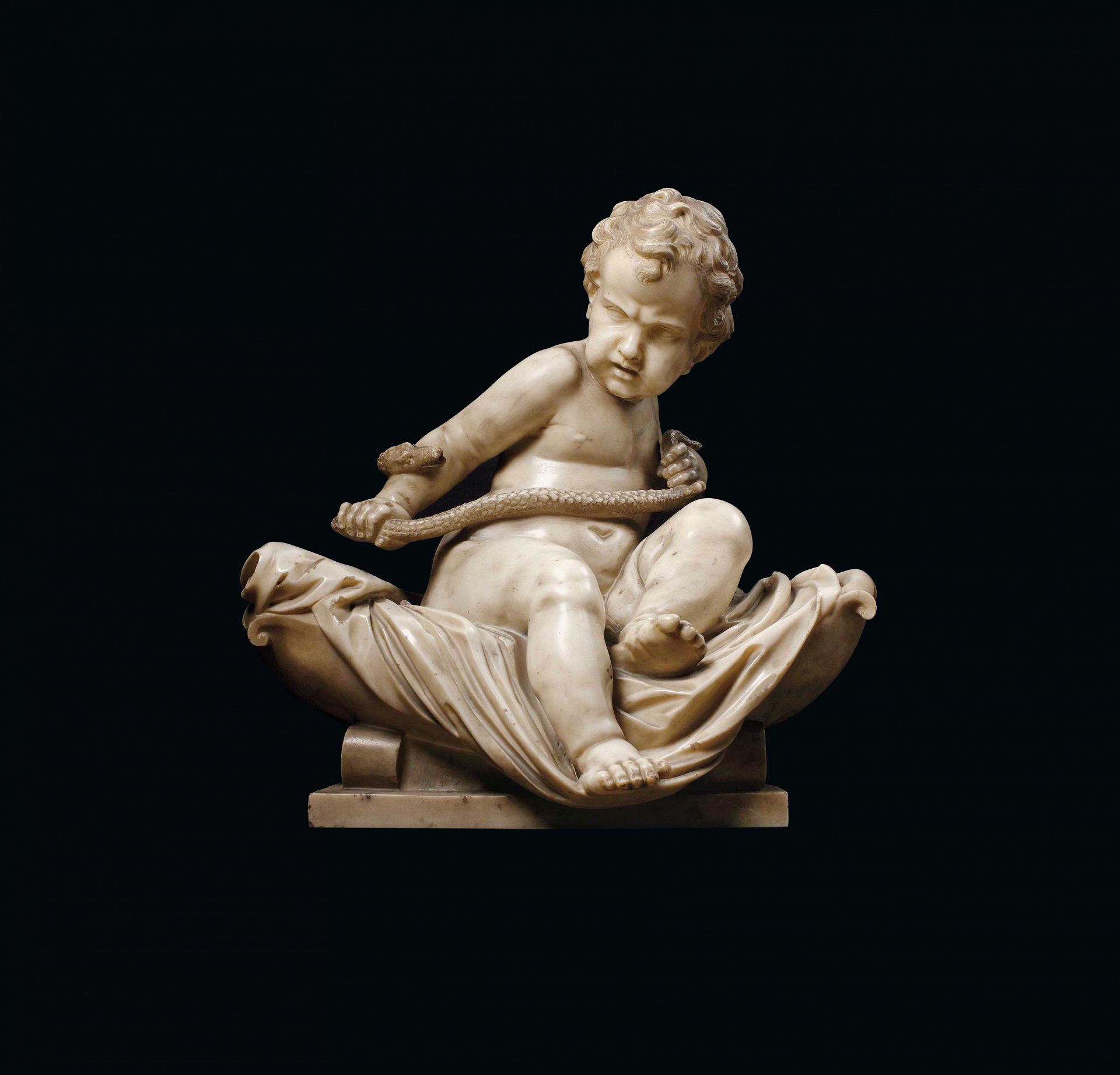
Roma Aeterna: Masterpieces of Classical Sculpture - see below
National Museum of Contemporary History - Tucked away in park Tivoli, you can see a permanent exhibition on Slovenians in the 20th century.
Slovene Ethnographic Museum – The museum has two permanent exhibitions. One of these is called Between Nature and Culture, and has a great collection of objects from Slovenia and around the world, well worth the trip up to the third floor to see it (as recounted here). From April 18 until October 19 (2019) you can also see a show calledShamanism of the Peoples of Siberia, from the Russian Museum of Ethnography, Saint Petersburg. The place is located near the newer branch of the Moderna galerija and Metelkova. You can read about this fascinating show here.
Union is "the Ljubljana beer", but now both it and Laško are owned by Heineken. There are many local brews on offer around town, though, if you want to explore IPAs, stouts, wheatbeers, sours and so on Photo: JL Flanner
Vžigalica Gallery – Until 27 October you can explore a spatial installation from the Berlin-based artist Sinta Werner.
Union Experience – The Ljubljana-based brewer has a museum showing the history of the company, with the ticket also including access to part of the factory and a few samples of the product. You can read about our visit here.
Volčji Potok Arboretum - Running until 3 November you can see a large collection of cacti here.
It's not a formal museum, but if you're interested in "Yugo-stalgia" then you'll enjoy a trip to Verba, a small, privately run space that's crammed with objects and pop culture items from the era, and is conveniently located at the start of one of the short walks to the castle. It's also a great place to take pictures, if you leave a donation, and you can read more about it here.
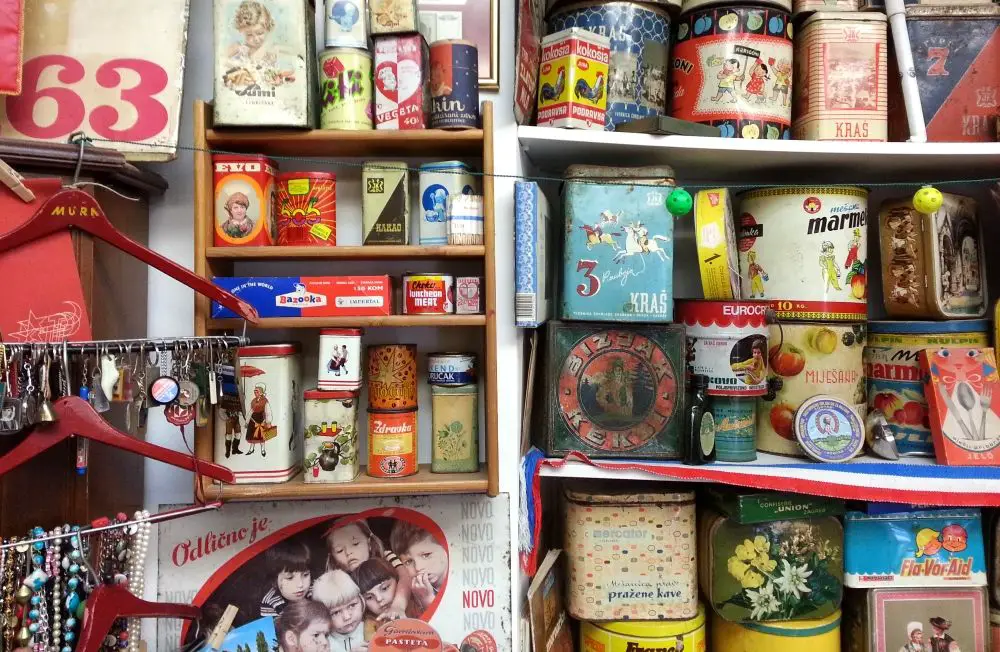
Verba. Photo: JL Flanner
Alternative Ljubljana isn't a museum or gallery, as such, but instead turns the city streets into a museum and gallery. Learn more about their tours of street art, history and LGBT Ljubljana here.
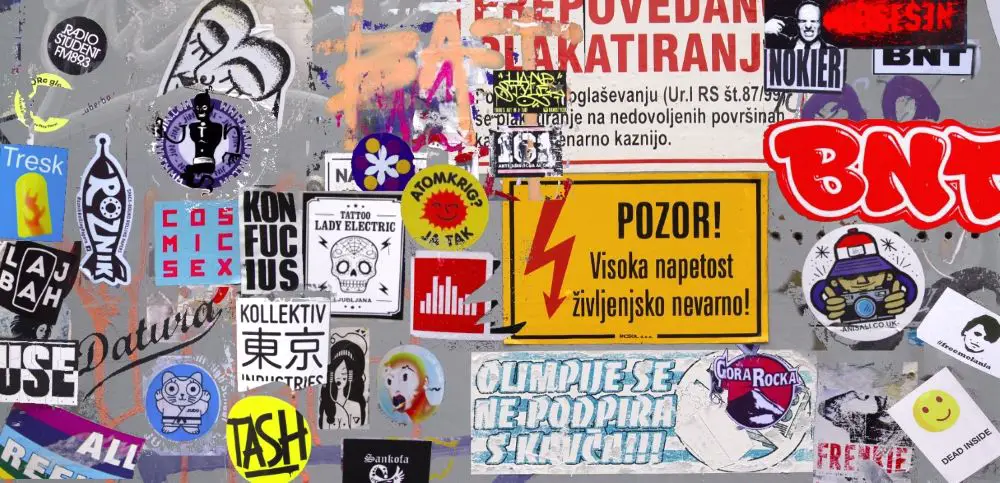
Photo: JL Flanner
Other things to do in Ljubljana
Learn more about Ljubljana with "25 things to know about Slovenia's green city of dragons", or take a look at our guide to spending from four to 48 hours here.
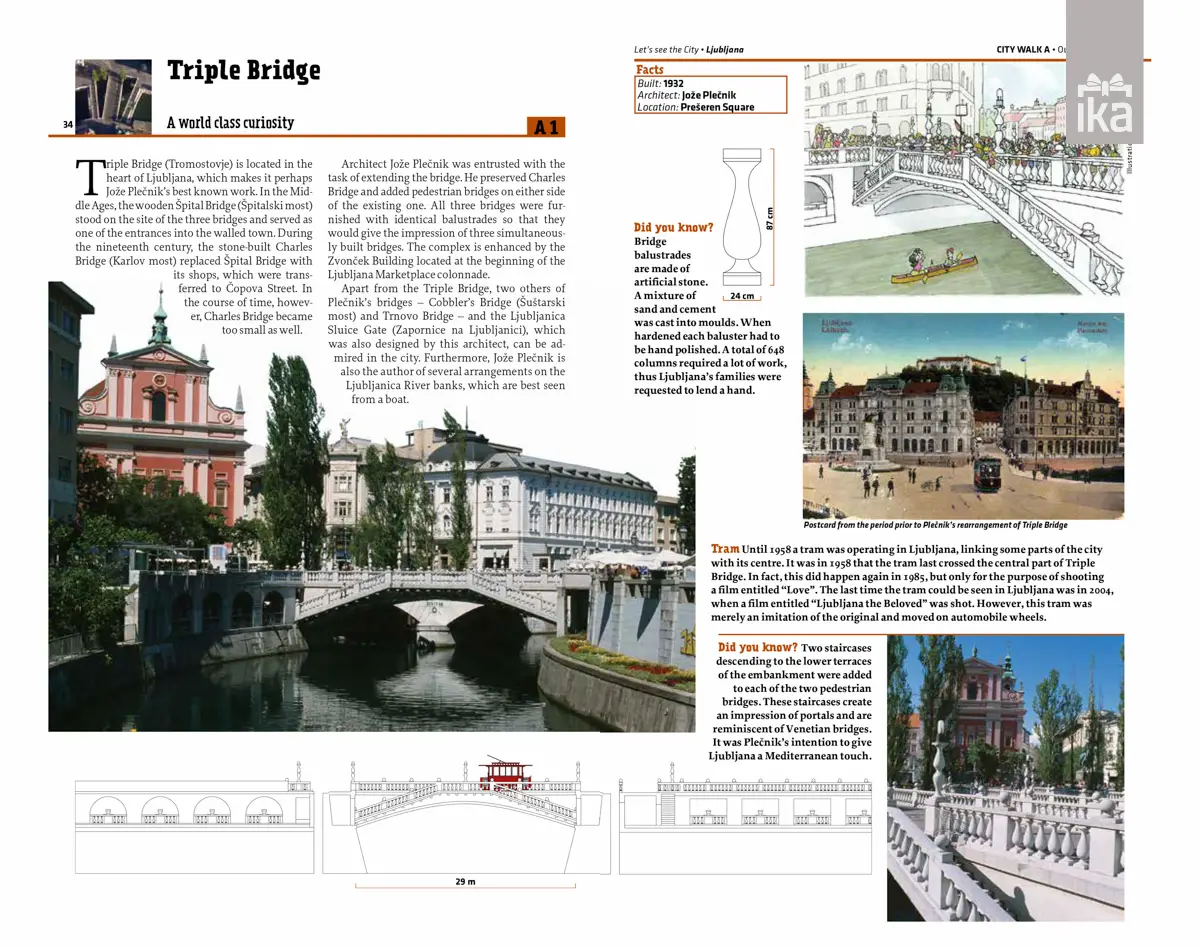
If you like the city's architecture then check out this great book, Let’s See the City - Ljubljana: Architectural Walks & Tours, with our review here and a page from the book shown above. We took a walk with one of the authors who showed us how much there is to learn and enjoy if you slow down and pay attention - read about that here.
Open Kitchen brings market stalls selling food and drink from some of the best restaurants in town every Friday, from 11am to 11pm, in the square between the cathedral and the river - just follow your nose and the crowds. Read more about it here.
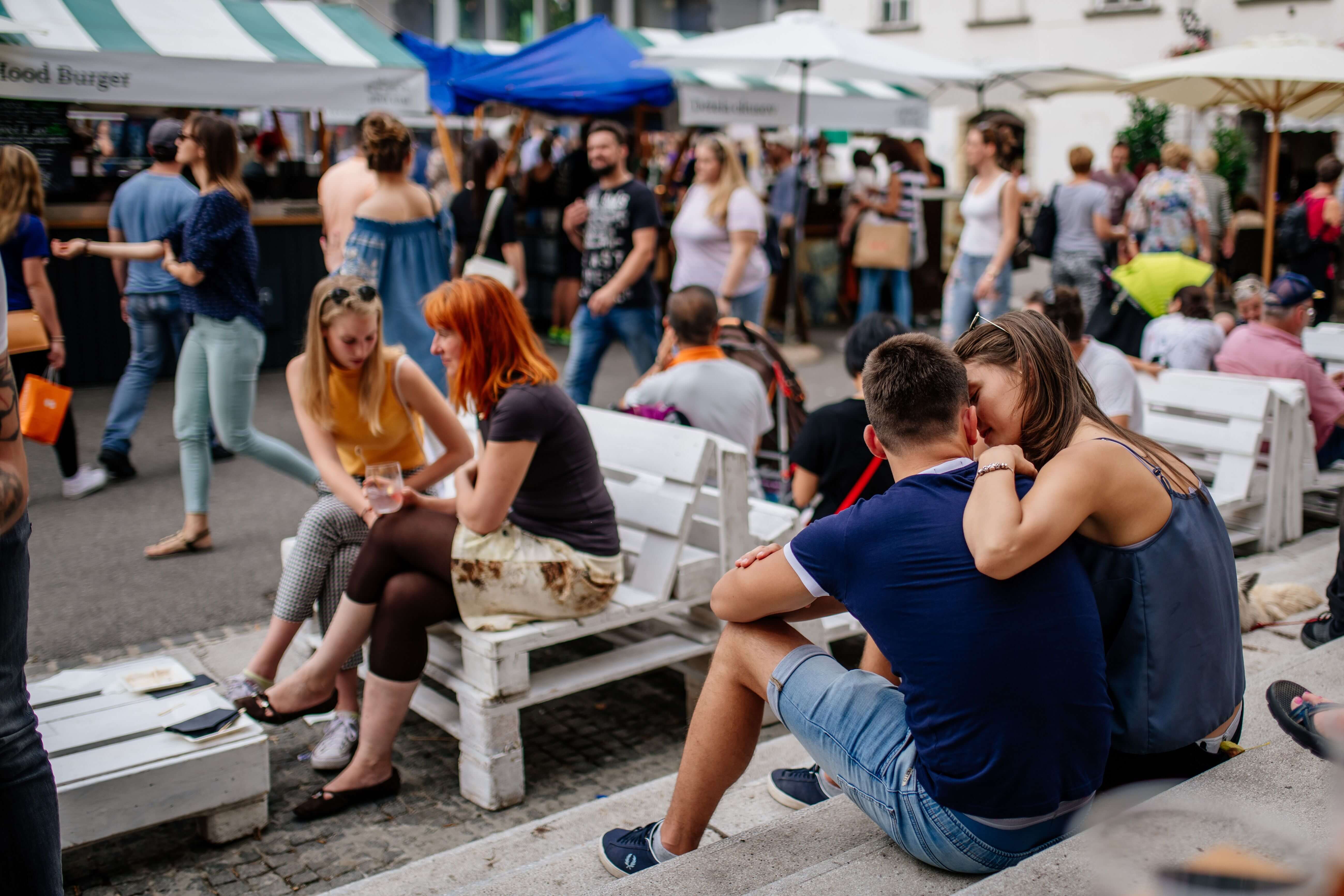
Photo: Open Kitchen
Ljubljana has some beautiful buildings from the early 20th century, in the Secessionist style, like the one below. Learn where to find them here.
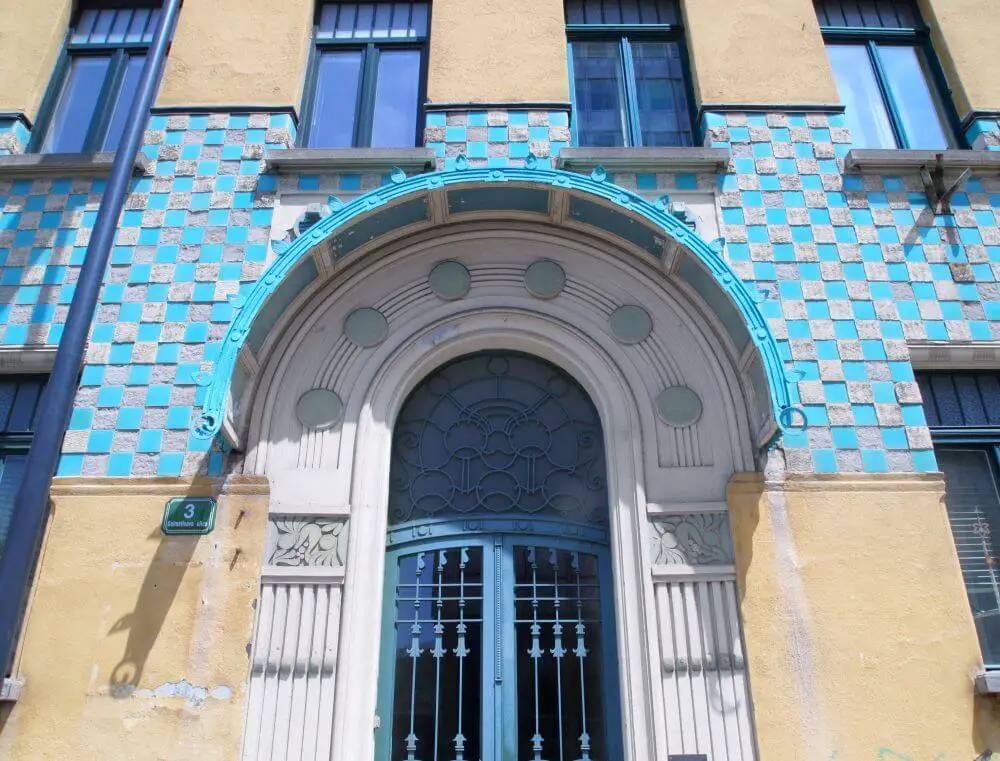
Photo: Neža Loštrek
For something a little more brual, check out Republika trg / Republic Square, in the heart of the political quarter.
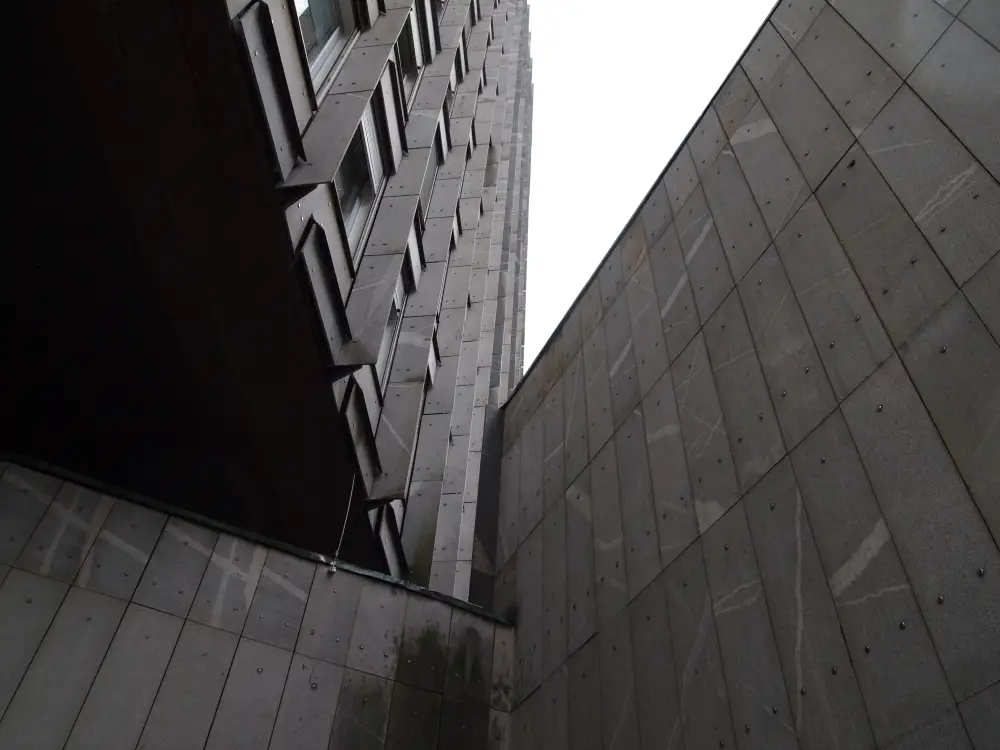
Photo: JL Flanner
Photo: JL Flanner
Some view of the city you can only get from the river. If you'd like to take a boat ride then read about my experience here. If you'd like to spend an evening painting with others, then take a look at Design with Wine, which organises painting parties on Trubarjeva cesta,
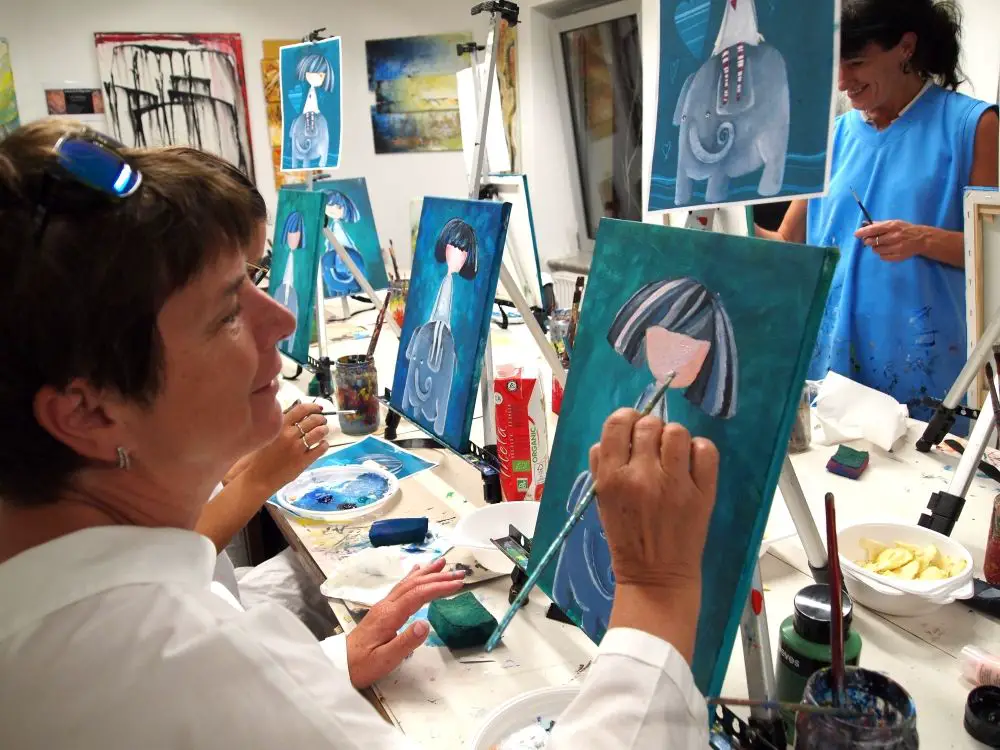
If you want to see some antiques, then check out the wonderful Antika Carniola, as discussed here. The man behind it, Jaka Prijatelj, has a fine eye for life on this street, as you can see on his Facebook account.
Photo: JL Flanner
If you’re in town and want to go jogging or walking in nature, why not take another look at the Castle, with a brief guide to the trails here. If you want something bigger, head to Tivoli Park.
And if you're bored with the Old Town, why not take a walk, cycle or boat ride to nearby Špica and enjoy the riverside life. Learn more about that here.
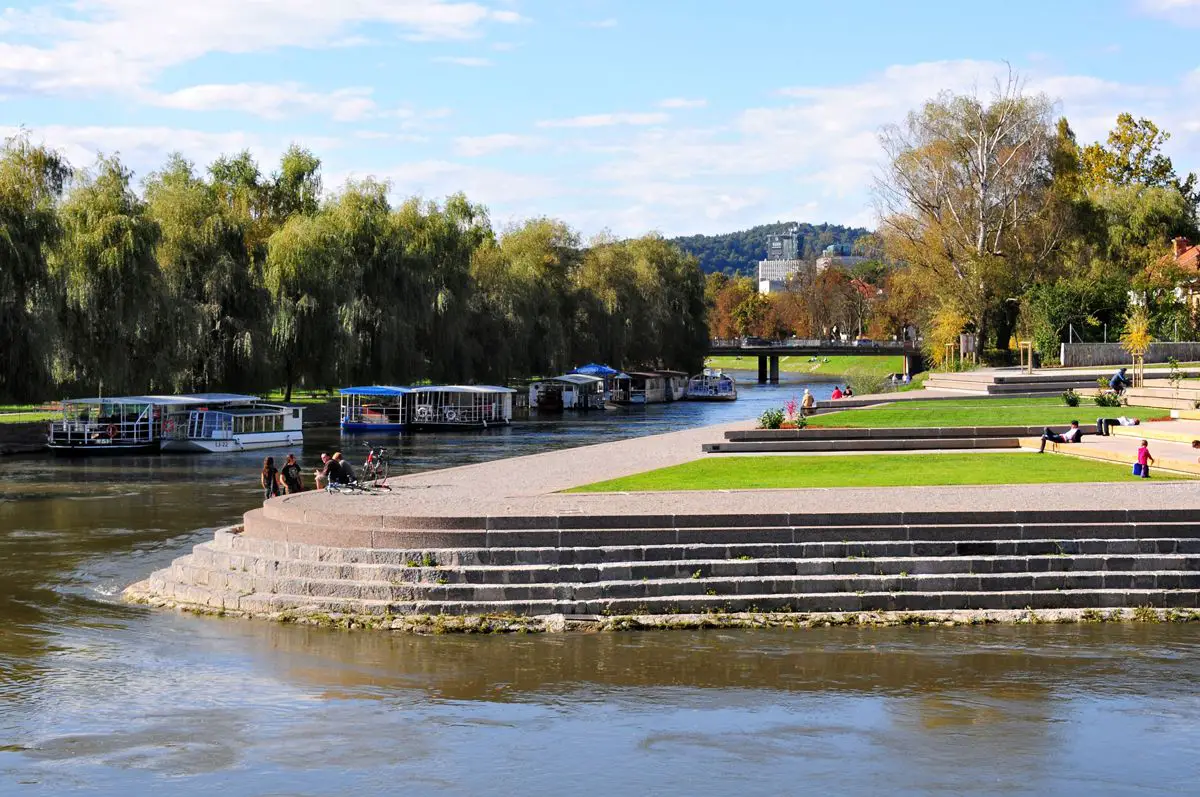
visitljubjana.si
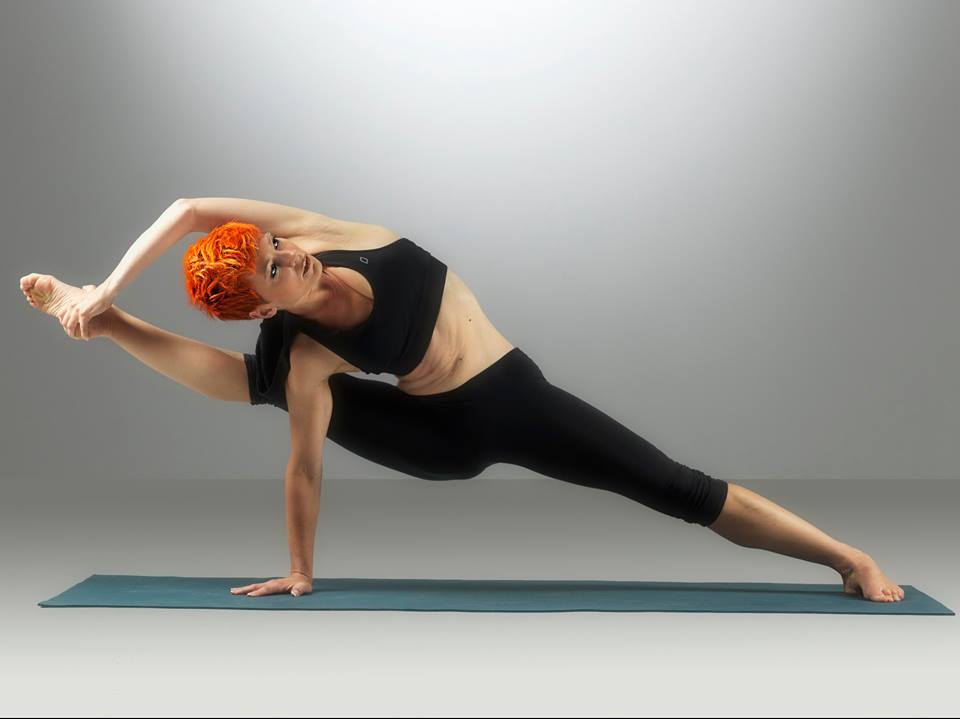
Want to stretch and breath? Then check out our list of drop-in yoga classes for tourists, visitors and the uncommitted. We go to Nataraja Studio, by Dragon Bridge, and here's a story about it.
Prefer to have someone else stretch you? The check out the totally legit massages you can get from Sense Wellness - either in one of their spas or in you home, office or hotel. (And - to repeat - these are legit and non-sexual in nature)
There are some golf courses near Ljubljana, but even ones further away are not far, as seen in our list of all the golf courses in Slovenia, which usually run until the first snow.
![]()
Photo: maxpixel.net, public domain
Daytrips
Most of Slovenia is only a few hours from Ljubljana, and you can easily visit Lake Bled, Lipica Stud Farm, Postojna Cave, Predjama Castle, the coast and other locations, while if you'd like to take a photo of from that bench in Bled, then you can learn how to get there here. If you’re looking for something more ambitious, then check out our recent guide to the 17 members of the Association of Historical Towns of Slovenia. We've also written guides on spending from four to 48 hours in Bled and Piran.
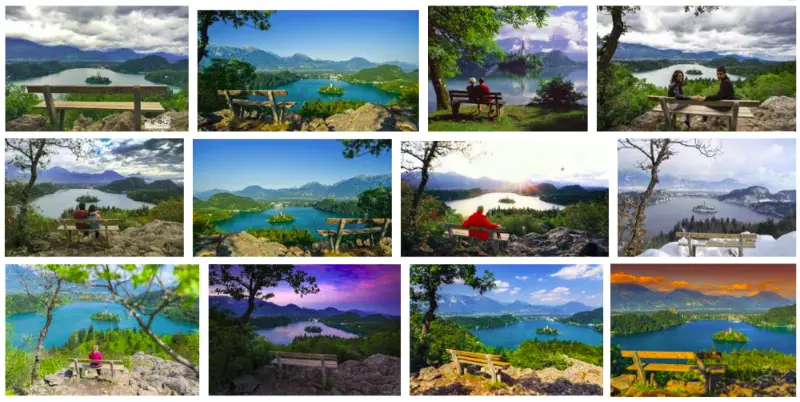
Photo: Google Image Search
Getting around
If you want to get a Ljubljana Tourist Card, which gives you travel on the city buses and entry to a lot of attractions, then you can read more about that here, and if you want to use the bike share system, as useful for visitors as it is for residents, then you can learn more by clicking this. Visitors with reduced mobility will be pleased to find that downtown Ljubljana is generally rated as good with regard to accessibility, and that there’s a free, city-sponsored app called Ljubljana by Wheelchair highlighting cafés, attractions and so on with ramps, disabled bathrooms and Eurokey facilities, which you can read about and download here. Manual wheelchair users can also borrow, for free, an attachment that will motorise their equipment, as reported here.
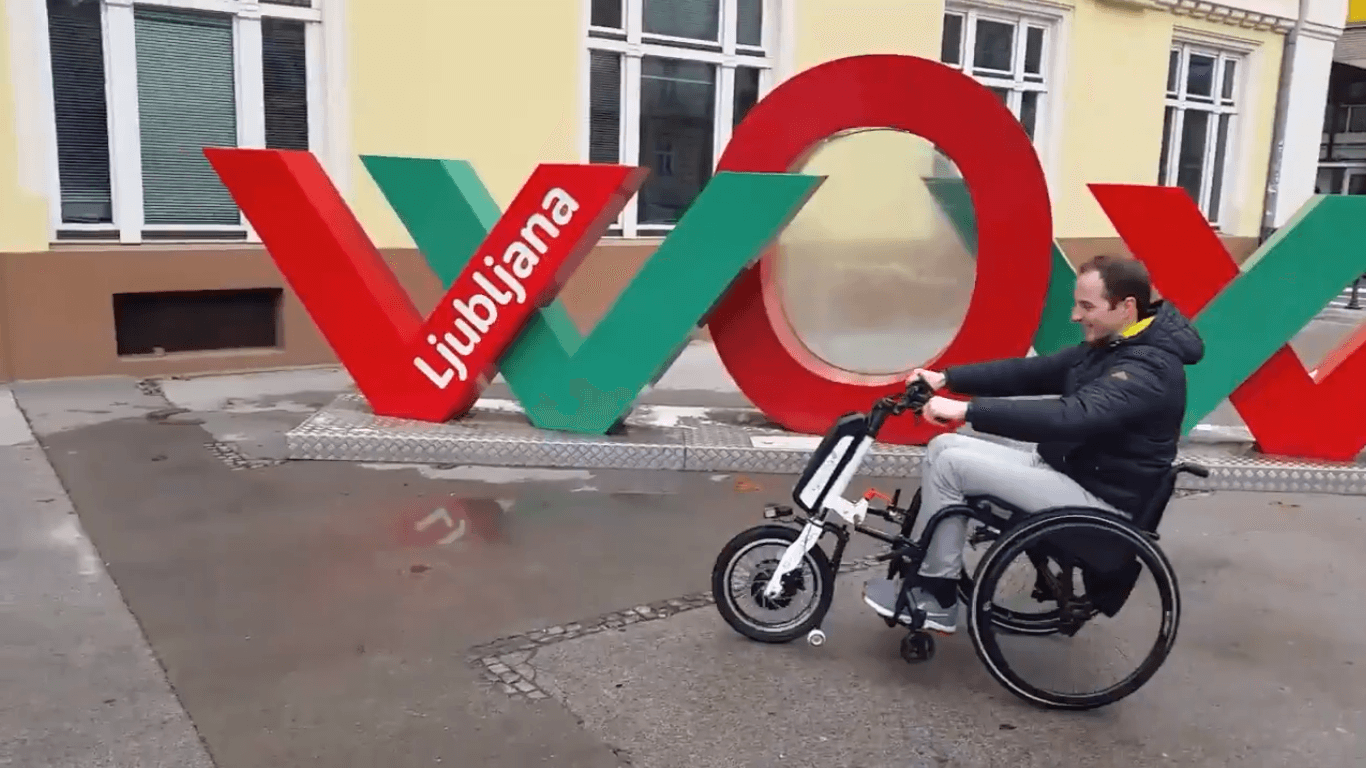
Screenshot from a Twitter video
If you’re driving into town and don’t know where to park, our guide to how to park in Ljubljana is here.
Emergencies
Ljubljana is a small and relatively safe city, but if need to contact the police then there’s a special number for foreigners, and that’s 113.
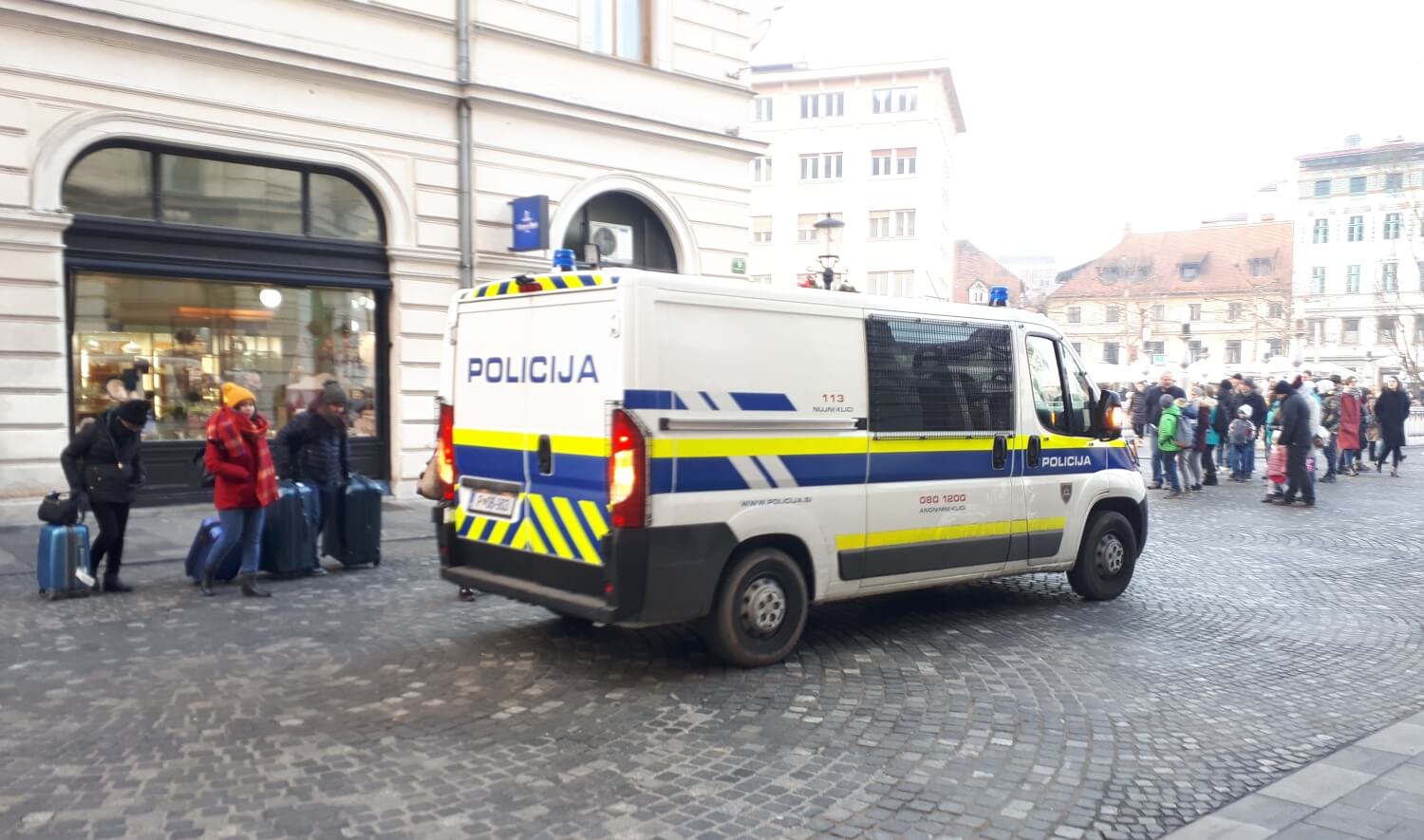
Photo: JL Flanner
There aren't many places to eat after midnight, and most of them are by the train station, as reported here.
Want / need cigarettes but the stores have closed? Here's an incomplete list of bars downtown that will satisfy your craving for the demon weed. While if you’re having trouble with the ATMs then here’s a guide to the Slovene you’ll see on screen. If you get a hangover then find out where to get paracetamol (and prescription drugs) in Ljubljana here, while details on emergency birth control can be found here.
In 1867 the first cast-iron Bridge was opened in the city of Ljubljana.
In middle ages only two bridges were connecting the banks of the Ljubljanica river: the Old Bridge (later called the Lower Bridge), which was standing in place of today’s Triple Bridge, and the Butcher's or Upper Bridge (Mesarski most, Zgornji most) in place of today's Cobbler's Bridge.
The Butcher’s Bridge, named after butchers stalls that were located on it, was pulled down at the beginning of the 17th century and in 1614 a new bridge was built in its place. The new bridge was equipped with little shacks that were mostly rented by cobblers, hence the bridge got a new name, the Cobblers Bridge (Čevljarski or Šuštarski most).
In the second half of the 19th Century the old Cobbler's Bridge had to be replaced for safety reasons with a stronger one. This was the first cast-iron bridge in Ljubljana and it soon became one of the most interesting technological solutions of the time. It was built of triangular elements cast in Dvor foundry in Žužemberk, which were then joined by screws at the construction site. The bridge was named after the then mayor, Janez Nepomuk Hradeczky, and called Hradecky Bridge (Hradetskega most).
Hradecky Bridge stood there until the beginning of the 1930s, when the architect Jože Plečnik designed a wider and more monumental bridge as part of his Ljubljanica riverbanks renovation plan.Plečnik’s new bridge is called Cobblers Bridge.
The old Hradecky Bridge was moved to nearby a morgue by Zaloška Street and so renamed the Mortuary Bridge (Mrtvaški most).
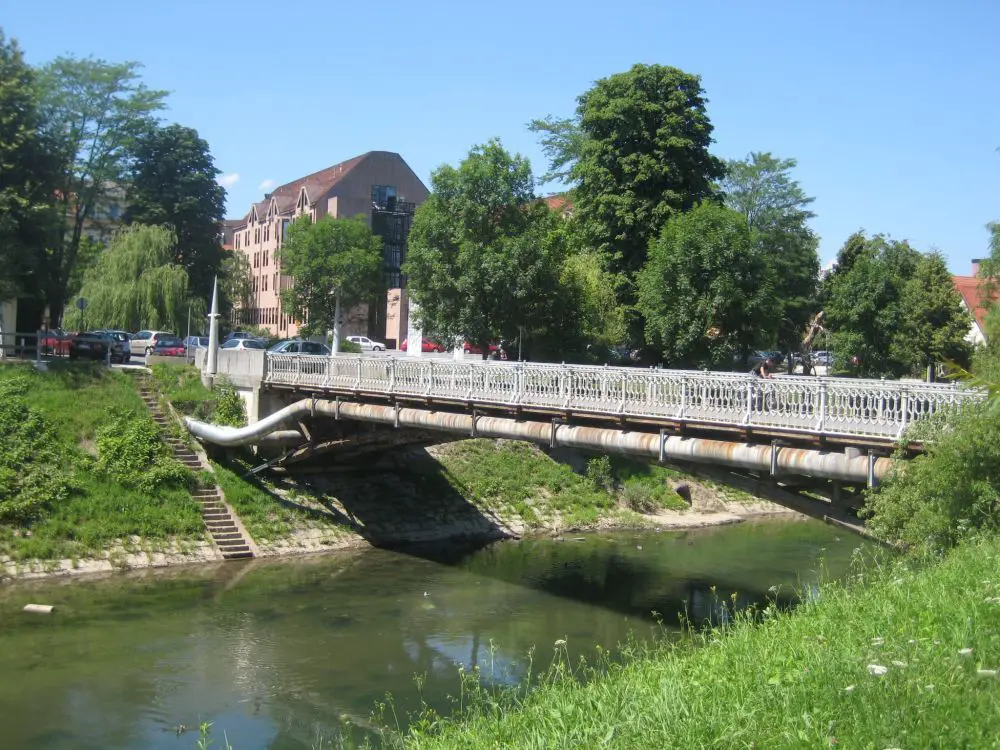
In 2011 the cast iron bridge got its new location in Trnovo, where it connects Žabjak (by Pizzeria Trta) and Krakovo, and is called Hradecky Bridge again.
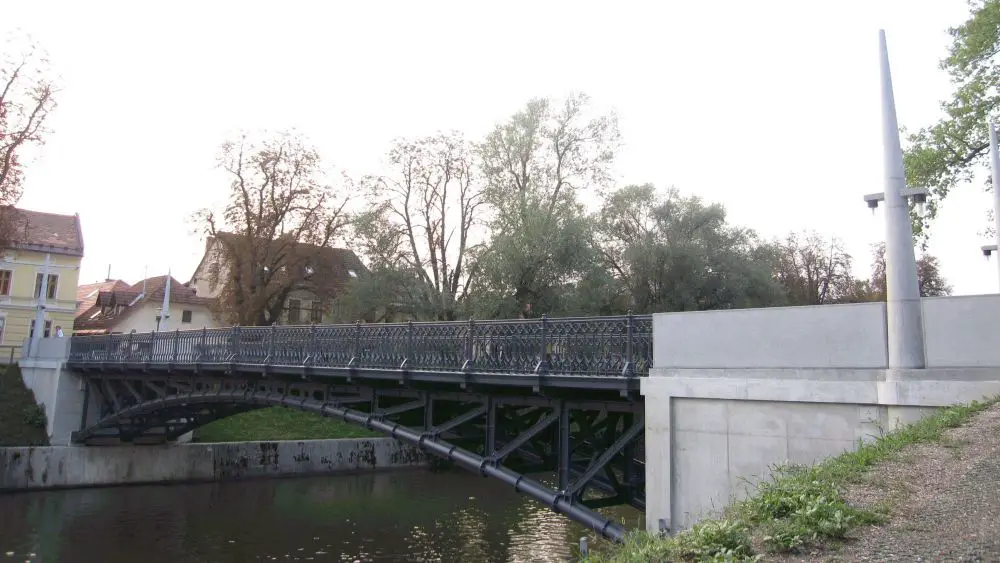
STA, 17 October 2019 - The government said on Thursday in response to a question raised by Left MP Franc Trček that 231 cases of haemorrhagic fever with renal syndrome (HFRS - Wikipedia) had been recorded so far this year, a record since monitoring started in 1983.
The figure stands out markedly, with the last outbreaks in 2008, 2012, and 2017 seeing 45, 185 and 76 cases respectively.
The Medical Faculty's microbiology and immunology institute conducts limited scope oversight of the disease's transmitters, meaning rodents, twice a year for research purposes. The monitoring is funded by the National Research Agency.
The government said it would back the introduction of continuous monitoring in case the relevant ministries received professionally-backed and financially sound proposals that would "prove this measure cost effective".
Outbreaks occur in cycles of three to five years. The reasons that cause an outbreak are not entirely clear. The Health Ministry said climate change, brining higher average temperatures and more precipitation and milder winters with less snow, is definitely among the reasons.
The HFRS fatality rate in Slovenia is fairly low, standing at 5-15%. Fifteen deaths have been recorded over the past 35 years, none in recent years.
No vaccination exists so far for three viruses causing the disease, whose initial symptoms include intense headaches, back and abdominal pain, fever, chills, nausea, and blurred vision.
The National Institute of Public Health (NIJZ) explained in Augusts that Slovenia was one of the most at-risk areas for HFRS because it is endemic to three hantaviruses causing the disease: the Puumala virus, the Dobrava virus and the Dobrava-Kurkino virus.
The disease has an incubation period of two to four weeks. A person gets infected when breathing in viruses that are excreted by rodents carrying the virus.
When cleaning out spaces that might be infected by rodents, one should air the rooms thoroughly, after which the surfaces should be sprayed with a 10% chlorine solution and left for 10-30 minutes. To prevent infection, the cleaner should also wear a protective mask and gloves.
Few people have done more to put Slovenia on the map of global gastronomy than Ana Roš, the Kobarid-based chef who seemed to come out of nowhere and win the title of Best Female Chef in the World in 2017, and her restaurant, Hiša Franko, a regular place on the list of the World's 50 Best Restaurants (this year at #38).
However, next month visitors to Slovenia will be unable to sample the work of Roš and her team, as the restaurant will be closed between 18 November and 3 December 2019, opening again on the 4th. This is because the whole crew will be leaving the Soča Valley to serve a pop-up version of Hiša Franko in Madrid. More specifically, from 19 November to 7 December 2019, a taste of Slovenian fine dining can be found at the NH Eurobuilding Hotel in Madrid.
This is part of the In Residence project, organised by Mateo & Co, that brings top chefs, their staff and equipment to the Spanish capital, and has already seen the participation of names such as Grant Achatz, Juan Manuel Barrientos, Harry Sasson, Leonor Espinosa, Jorge and Mark Rausch, Nacho Manzano, and Mauro Colagreco.
More details of the Madrid adventure, and bookings, can be found here, while Hiša Franko’s regular webpage is here
As an author living in Ljubljana, much of my work is inspired by Slovenia and the region. Most recently I was inspired to write an alternate history of the breakup of Yugoslavia, which asks the question: What if Marshal Tito had named a totally untrained and untested successor? The first book centers on Slovenia and its war of independence. Here are ten interesting things that I learned, or discovered more about, while doing research for Tito’s Lost Children: War One Slovenia.
1. If you live in Ljubljana, Marshal Josip Broz Tito died in the hospital you probably go to.
Josip Broz Tito died at the University Clinical Center in Ljubljana on Njegoševa cesta. In 1980 it was one of the newest and most advanced medical centers in Yugoslavia, so he chose to travel to Ljubljana for treatment. The procession that took his body back to Belgrade on his famous Blue Train started from the Slovenian Parliament and what is today called Republic Square. A bit over ten years later this was the same location where Slovenian independence was declared.
Related: May 4 in Slovenian History: Tito Dies in Ljubljana
In the Tito’s Lost Children trilogy, eleven years after his death, Tito’s fictional successor is tasked with stopping the breakup of Yugoslavia, avoiding capture by Serbian nationalists and preventing a wider war and ethnic cleansing in the Balkans.
2. The rest of the former Yugoslavia has stereotypes that Slovenes are cheap, that Slovene girls are ‘easy,’ and that Slovene men are wimpy.
In the rest of the former Yugoslavia, ‘going Dutch’ is apparently referred to as ‘being Slovene.’ Despite – or possibly because of --the fact that Slovenia was the wealthiest member republic of the former Yugoslavia, Slovenes have a reputation as the misers of the region. In my experience the Slovenian attitude toward money seems to be more of an overt concern with good accounting. Be sure you keep the receipt for that one piece of burek you just bought!
There is also a stereotype that Slovene girls are ‘easy’, possibly because most interactions between Slovenes and people from other Yugoslav nationalities took place on ‘spring break’ style vacations in Croatia. As a single guy living here, I must report that I don’t have much evidence that this stereotype is true.
Perhaps related to the above, there is also a perception in the Balkans that Slovene men are wimpy. However, Slovenes are quick to point out that this is not the case and that brash behavior is simply frowned upon more here than it is in the rest of the former Yugoslavia.
In Tito’s Lost Children, the main characters meet Slovenes who seem to fulfill these stereotypes, only to turn out to be slightly misunderstood once we actually get to know them.
3. Slovenia declared independence one day before they announced that they would.
88.5% of Slovenians voted for independence in a referendum held on December 23rd 1991, which gave the government six months to implement the decision. The government took almost the entire six months to prepare for the independence and a probable conflict with the Yugoslav People’s Army. However, independence was declared one day early, before the waiting period expired, in order to catch the People’s Army off guard. This surprise move possibly made Slovenian victory easier. It also plays a role in Tito’s Lost Children.
4. Slovenska Cesta used to be named Tito Street.
It seems almost obvious once you know that ‘Tito Street,’ one of the main roads in the center of Ljubljana, was renamed ‘Slovenian Street’ upon independence. The names also changed for a lot of other landmark places in the center of the city. These include: Revolution Square, present day Republic Square, and Liberation Square, which is today’s Congress Square.
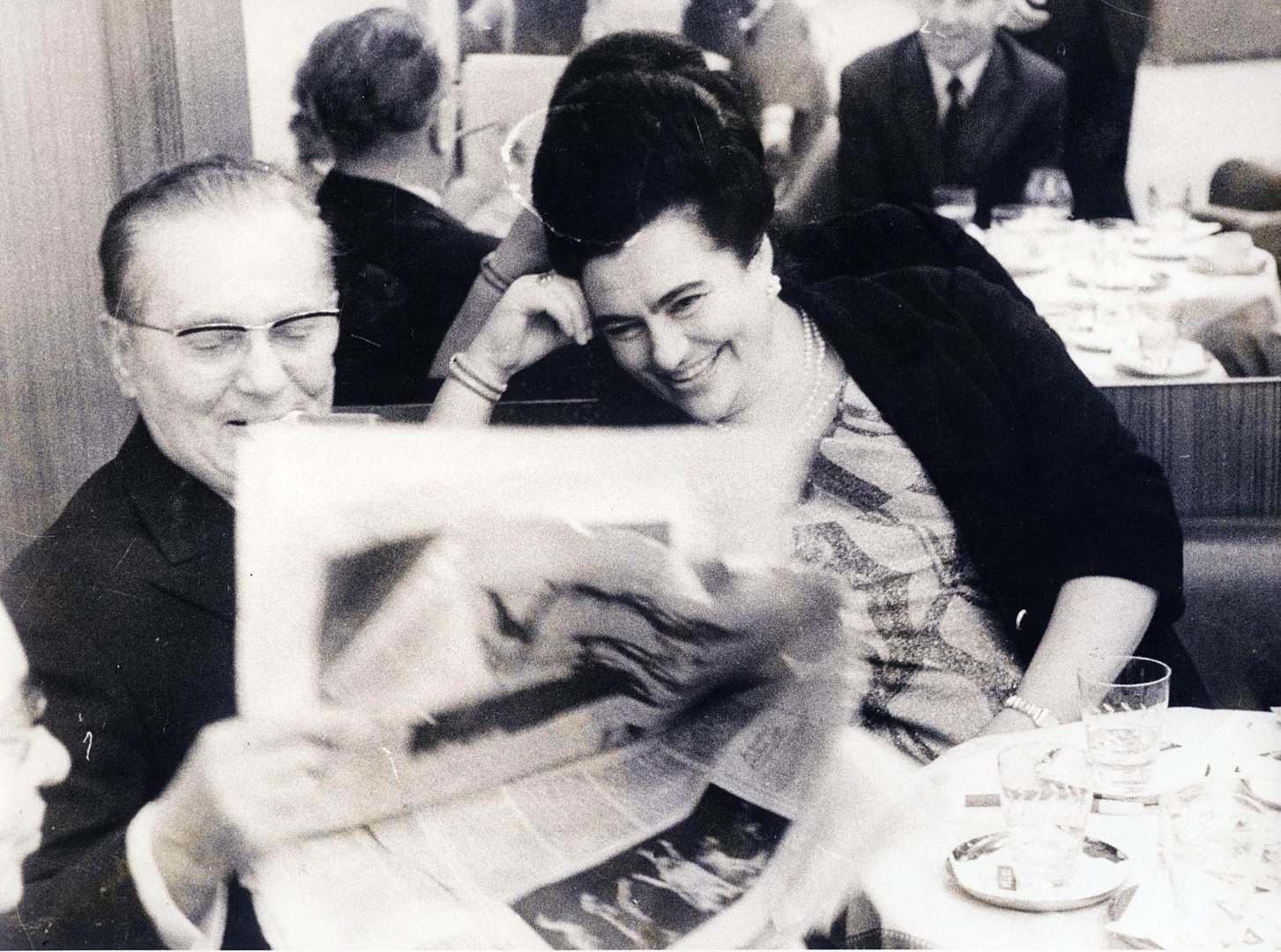
Tito and Jovanka reading Delo in Hotel Slon, on Tito Street, in 1969. Wikimedia
5. The present day prison hostel in Metelkova was where Janez Janša, an activist in the 1980’s, was imprisoned.
One of Ljubljana’s alternative culture hubs, now known as Metelkova for the street that it fronts on, has a prison that has been converted into a hostel. During the late 1980’s Metelkova was a barracks for the Yugoslav People’s Army, which got abandoned after the Slovenian war of independence. The prison hostel in it was once a very real military jail where politician Janez Janša was imprisoned after leaking classified People’s Army documents to Mladina, a magazine that, at the time, was officially the communist party’s youth magazine. I describe Metelkova as a functioning barracks toward the end of Tito’s Lost Children Book One and in the beginning of Book Two: Croatia.
The prison in Metelkova before the area became a squat. Source: Hostel Celica. Below, the place now. Source: JL Flanner
6. Technically speaking, Slovenia declared war on Yugoslavia, not the other way around.
When you hear about the Ten-Day-War, it often sounds as if the scrappy Slovene defense forces went up against the overwhelmingly superior aggressor of the Yugoslav People’s Army and won. This is true; a People’s Army soldier fired the first actual shots in the war. However, the order to retaliate, should the People’s Army resist Slovenia’s independence, was given before those shots were fired. This means that, technically, Slovenia did not only win the war, it was the first to declare the war in the first place.
7. No one can agree on who gave the order for the Slovene Territorial Defense forces to engage the Yugoslav People’s Army.
To this day, both then-President Milan Kučan and Janez Janša, who was defense minister at the time, claim to have been the one to give the order for the Slovenian forces to fire at the People’s Army. This means no one really knows who gave the actual order to start the war. Spoiler Alert: in Tito’s Lost Children, this is because my main character gives the order and both Kučan and Janša have to cover up her existence!
8. After World War Two a large group of fighters was killed or forced into exile.
Walking around Ljubljana, you will doubtless notice the large number of plaques dedicated to the partisan fighters who fell fighting the fascists during the Second World War. However, there was also another group of soldiers that didn’t get plaques -- to put it mildly.
The Domobranci (Home Defenders) were composed of people who did not support the partisans and the Italians allowed them to band together to defend their homes. Eventually, the Nazis forced them into fighting on their side. Nevertheless, they were branded as traitors after the partisans’ victory and were either forced to flee, sent to ‘reeducation’ camps or shot in mass killing fields. Knowledge of this was largely suppressed during the Yugoslav times. Nowadays, when you hear Slovenes speak of the ‘complicated World War Two history,’ this is what they are talking about.
One of my characters in Tito’s Lost Children is a descendant of a Domobranec. She has to deal with the political fallout of this history and was inspired by one of my real ancestors, who I discovered while doing research for the books could possibly have been a Domobranci sympathizer.
9. There was a whole class of people who had their rights as citizens erased when Slovenia became independent.
After Slovenia declared independence in 1991 it erased many non-Slovene Yugoslav nationals living in Slovenia from its list of citizens. This functionally made them non-persons in Slovene society. The issue has not been addressed until relatively recently. Milan Aksentijević, one of the senior officers of the Yugoslav People’s Army in Slovenia, had this happen to him, even though he had lived in Slovenia for years and was married to a Slovene. Something similar happens to a fictional general in my books.
10. Mt. Triglav looks absolutely nothing like it does on the flag.
The climax of Tito’s Lost Children Book One takes place on the summit of Mount Triglav. While doing research for the books I ran across a number of pictures of the mountain and was quite hard pressed to find where the three peaks were. I guess they go in kind of a curve?
At one point, I resolved to finally climb Triglav as research for the books. My mountaineer friend just laughed and suggested that a ‘city rat’ like me should start with Šmarna Gora, a hill on the outskirts of Ljubljana, instead. I had to settle for watching YouTube videos about climbing Slovenia’s highest peak.
Tito’s Lost Children War One: Slovenia is available here.
In 1910 the Carniolan provincial assembly adopted a new electoral law for municipal elections, under which many women were granted suffrage.
At the time Ljubljana was a stronghold of the elitist Liberal Party, with the Slovenian People’s Party in opposition. At the provincial level, Slovenian People’s Party won an absolute majority in 1908 and their municipal electoral reform meant an attack on the advantageous position Liberals’ enjoyed in Ljubljana.
Liberals, who were mostly supported by the wealthy voters, were fierce opponents of universal, equal and women’s suffrage. The Slovenian Catholic political camp in Carniola (liberals called them clericals) recognised women's municipal suffrage in 1910, and not only for taxpayers and landowners, but also explicitly for teachers and retired teachers. Besides, women were allowed to actually vote, not just authorise a man to go and cast a vote in their name, which was the practice until then.
In 1911, when women participated in Ljubljana municipal elections for the first time, police had to protect the separate female polling station on Bleiweiss street (today’s Prešeren street) and eventually closed the street down, since liberals organised protests during which they were yelling and spitting at mostly Ursuline women – nuns – who, as teachers, had a right to vote which they were also willing to exercise.
After WWI, on May 15, 1920 the Slovenian People’s Party granted universal suffrage for men and women at the municipal level. This was the first time universal women suffrage was introduced to Slovenian lands. It did not last long, however. The opponents of universal suffrage, local liberals and leaders in Belgrade managed to dismiss the right just two months before the local elections in 1921.
Apart from Slovenian People’s Party, the social democrats, communists and Croatian farmers’ party also stood in favour of women suffrage.
Women were granted the right to vote again in 1945, when the communists took power. However, given the one-party system and a lack of true choice, we can conclude that Slovenian men and women were finally granted equal suffrage with Slovenian first democratic elections in 1990.


